








Official membership magazine of international association of ports and harbors Providing thought leadership on the role of ports in a connected world March/April 2023 IAPHworldports.org Vol 68 No 2 Big move for small ships Benefits of electrifying feeder vessels Getting a lift Visualizing automated port terminals Making new connections Lithuania emerges as Baltic maritime hub on board Staying The WISTA International president Elpi Petraki talks people retention amid a digitized maritime industry
Abu Dhabi, United Arab Emirates
A world-class, in-person event in Abu Dhabi bringing together leading port stakeholders for learning, information sharing, networking and collaboration.

Host
Presented
Sponsor
by SAVE THE DATE
31 Oct - 2 Nov, 2023
Sign up for
updates: worldportsconference.com
EDITOR’S COMMENT & CONTRIBUTORS
Pledging to help make maritime more diverse
PERSPECTIVE SINGLE WINDOW SYMPOSIUM
A round-up of the IMO/IAPH meeting
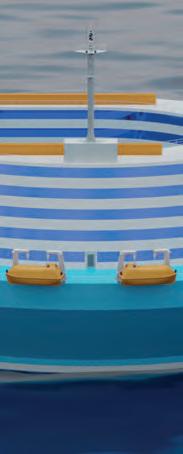
WAKE-UP CALL ELECTRIFICATION
How sea- and river ports connect via feeders
INTERVIEW DR PHANTHIAN ZUESONGDHAM
The automation expert on the IAPH working group

IN CONVERSATION WITH ELPI PETRAKI
The shipmanager talks skills and talent
FEATURE ELECTRIFICATION
Looking to electrify feeders
CLOSING THE GAPS BMT
Talking infrastructure in ports
IN NUMBERS TERMINAL AUTOMATION
An overview of the world’s automated terminals
THE COLUMN SANJAM GUPTA
The Indian port reform
PROJECT FOCUS MARITIME LITHUANIA
A journey to explore the growing Baltic maritime hub
PERSPECTIVE NUCLEAR PROPULSION
Making the case for the new nuclear
VIEW FROM ASTERN CONTAINER SHIPPING
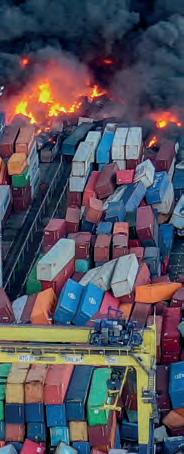
Looking back to the beginnings of container trade
QUICK 10 LEE EUNG-HYUK
Getting up close to the Port of Busan marketing director
LOOKOUT PORT OF ISKENDERUN
An earthquake causes havoc in the port
IN COURT SANCTIONS
Trade sanctions leave practical questions for ports
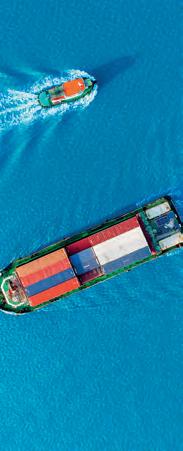
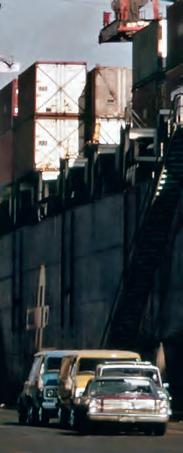
IAPH
your
10 16 28 30 34 Vol 68 | No 2 | 2023
| | | | | | | | | | | | | | | | |
CONTENTS
Cover photo: Steve Franck/S&P Global
and events from
association 02 08 14 16 04 10 15 18 22 24 30 34 23 28 32 38 THE REVIEW TO RULE THE WATERS Geopolitcal tensions and the fight for economic success 40
INFO News
PORTS & HARBORS
Published bi-monthly by the International Association of Ports and Harbors (IAPH), produced edited, and printed by S&P Global Market Intelligence.
ISSN: 0554-7555
PUBLISHER
MASAHIKO FURUICHI
IAPH secretary general
E: info@iaphworldports.org
PATRICK VERHOEVEN
IAPH managing director
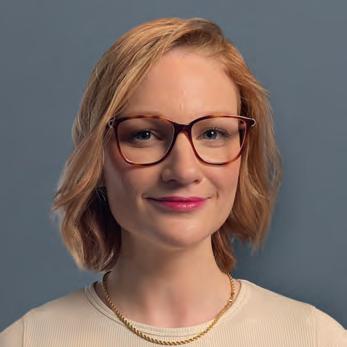
E: patrick.verhoeven@ iaphworldports.org
PRODUCTION
S&P Global Market Intelligence
5th floor Ropemaker Place, 25 Ropemaker Place, London, EC2Y 9LY, UK
T: +44 (0)203 253 2100
EDITORIAL
INES NASTALI
Content management principal
E: Ines.Nastali@ihsmarkit.com
ADVERTISING AND EVENT SALES
JOHN KNOWLES
Sr sales executive – EMEA
E: John.Knowles@ihsmarkit.com
CONTENT EDITING
KERI DEEGAN
Content management director
CONTENT EDITORS
IRENE SOO
NATALIA NGUI
REBECCA LYDIA VEGA
YOGES PALANIAPPAN
DESIGN
HANNAH KIDD
Associate director design
MATT RAMSDALE
Principal designer
DESIGNERS
PENNY TAGGART
WYMAN CHOO
PRODUCTION
KENLYN FLEARY
Production controller
EDITORIAL AND PUBLISHING
MANAGEMENT
PETER TIRSCHWELL
VP editorial and publishing
KEN FREDMAN
Head of editorial, design, & publishing
SUBSCRIPTIONS
INTERNATIONAL ASSOCIATION OF PORTS AND HARBORS
IAPH members enjoy a free subscription to P&H. If your organization is not a member and you would like a paying subscription to the magazine, please contact the IAPH for more information at:
7th Floor, South Tower, New Pier Takeshiba
1-16-1 Kaigan, Minato-ku Tokyo 105-0022, Japan
T: +81 (0) 3-5403-2770
F: +81 (0) 3-5403-7651
E: ph@iaphworldports.org
W: www.iaphworldports.org
COPYRIGHT
© 2023 BY S&P GLOBAL MARKET INTELLIGENCE LLC (AND ITS AFFILIATES AS APPLICABLE).
ALL RIGHTS RESERVED.
No part of this publication may be reproduced or transmitted, in any form or by any means, electronic, mechanical, photocopying, recording or otherwise, or be stored in any retrieval system of any nature, without prior written permission of S&P Global Market Intelligence.
Any views or opinions expressed do not necessarily represent the views or opinions of the International Association of Ports and Harbors (IAPH), S&P Global Market Intelligence or their affiliates.
DISCLAIMER OF LIABILITY
Whilst every effort has been made to ensure the quality and accuracy of the information contained in this publication at the time of going to press, IAPH, S&P Global Market Intelligence, their affiliates, officers, employees and agents assume no responsibility as to the accuracy or completeness of and, to the extent permitted by law, shall not be liable for any errors or omissions or any loss, damage or expense incurred by reliance on information or any statement contained in this publication.
ADVERTISEMENTS
Advertisers are solely responsible for the content of the advertising material which they submit to us and for ensuring that the material complies with applicable laws. IAPH, S&P Global Market Intelligence and their affiliates are not responsible for any error, omission or inaccuracy in any advertisement and will not be liable for any damages arising from any use of products or services or any actions or omissions taken in reliance on information or any statement contained in advertising material. Inclusion of any advertisement is not intended to endorse any views expressed, nor products or services offered, nor the organisations sponsoring the advertisement.
THIRD-PARTY DETAILS AND WEBSITES
Any third-party details and websites are given for information and reference purposes only and IAPH, S&P Global Market Intelligence and their affiliates do not control, approve or endorse these third parties or third-party websites. Further, IAPH, S&P Global Market Intelligence and their affiliates do not control or guarantee the accuracy, relevance, availability, timeliness or completeness of the information contained on any third-party website. Inclusion of any third-party details or websites.
INES NASTALI Editor
Come as you are
During the WISTA International conference in autumn 2022, the women’s organization and the IMO launched the Maritime Speakers’ Bureau where women and minority speakers can register to promote that they are willing to participate in conference and webinar panels as active speakers.
The accompanying website states why the two partners saw the need to create the bureau: “When there are all or virtually all-male panels, fewer women choose to become speakers themselves as they feel unwelcome, and this perpetuates the issues. Also, the image of the sector as very male is reinforced through the absence of women and minority speakers. Compounding this issue is that without the opportunity to take a full and active part in panels, they lack profile-building opportunities, which is essential to gaining experience and recognition.”
In addition, there are three pledges that conference organizers, speakers, and sponsoring companies can sign to show their commitment to either produce a diverse line-up of speakers at their events or to confirm that as a speaker, they are only participating in events that have made efforts to put together a diverse selection of speakers.
I have already signed up to the speakers’ bureau as I enjoy participating in conference panels, either as a moderator or as a panelist and have therefore also signed the speakers pledge.
In agreement with the above quote, I think for career-building and advancing to be recognized as an expert in the field, it is vital to build your public image.
EDITOR’S COMMENT
Also, the maritime industry is facing a skilled worker shortage – see our cover interview with Elpi Petraki of ENEA Management and current WISTA International president and the IAPH’s Patrick Verhoeven on page 4 for their thoughts on this topic – and this also has to do with the changing face of work culture.

A younger generation no longer just goes to work, we expect to be able to show up as our true self at a company that looks out for sustainability and inclusion of their company’s impact and employees.
I therefore invite you to also sign up to the bureau and pledges and encourage colleagues, too, as currently, there is a focus on speakers from the shipping side but to make it truly inclusive, the men and women of ports also need to sign up.
To raise awareness of the fact that women and minority speakers are not as much represented as they should be, I also have made a pledge with myself: I only attend events that feature a diverse panel.
This has led me to miss out on several, I am sure hugely informative events, conferences, and outings – I could have watched the virtual residency ABBA Voyage show in London as an after-press conference event, but I decided not to attend the press conference after all as the inviting company did not manage to secure at least a female speaker for its event.
I do check in with organizers and make them aware that I will not be able to attend because of the reasons mentioned. And they often inform me that they have tried to get a woman on board but failed.
In that context, I am often surprised that many of those companies have hired a PR and marketing agency to help with organizing especially press events. When approached, those agencies tell me that they had no say in putting the panel together for the client.
While this might be, I do think that they are doing their clients a disservice by not intervening and supporting them to ensure the diverse voices of the maritime industry are heard.
Whatever it might be, an excuse, ignorance to face a changing world, or a genuine issue to find a female or diverse expert, those companies come across a bit helpless on to deal with the situation. Not a great message you want to take to your customers.
The speakers’ bureau will make sure that these excuses will not count in future. It is still in the Beta version, so do help to get it off to a flying start.
You can sign up to the Maritime Speakers’ Bureau and to the pledges on the bureau’s website: www.maritimespeakers.com
TONY SLINN Contributors
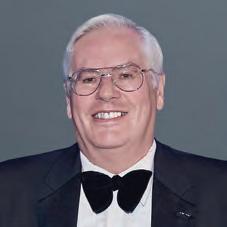
I have always been intrigued by people who not only have a great idea, but also the will and ability to transform it into something that, just possibly, could change the world. Malcom Purcell McLean’s moment came in 1937 as he waited for hours for stevedores to unload his truck. Why not take just the trailer, free of its wheels and to be lifted unencumbered, he thought? It took another 15 years to turn that idea into the reality of containerization we know today. Truly world changing.
I had the honor of talking to Dr Zuesongdham, who was extremely knowledgeable, and did not mince words describing how ports must evolve and adapt their business models to stay competitive. I discovered, talking with her, that automation is about a great deal more than just drones and computer-controlled quay cranes. ines.nastali@ihsmarkit.com
03 EDITOR’S COMMENT & CONTRIBUTORS CONTRIBUTORS
CHARLIE BARTLETT Contributors
@InesNastali
Photos top left to right: Ines
Nastali
| Charlie Bartlett
| Tony Slinn
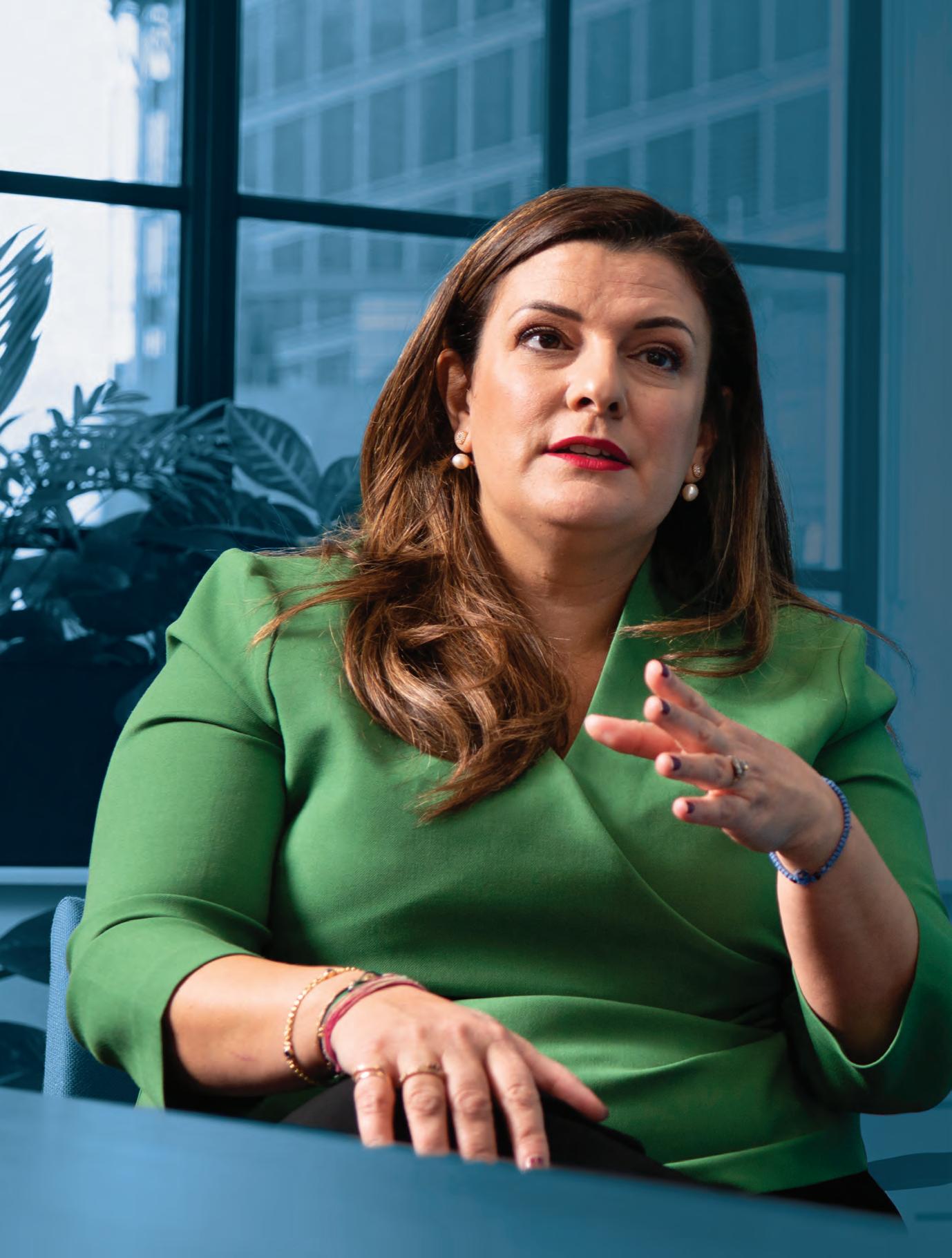
04 IN CONVERSATION WITH ELPI PETRAKI
Photo: Steve Franck/S&P Global
Elpi Petraki, chartering, operations, and business development manager at ENEA Management in Greece, and Patrick Verhoeven, managing director of the IAPH, compare notes around the impact of digitized trade information and how to win skilled employees of the future
INES NASTALI
Onthe same page
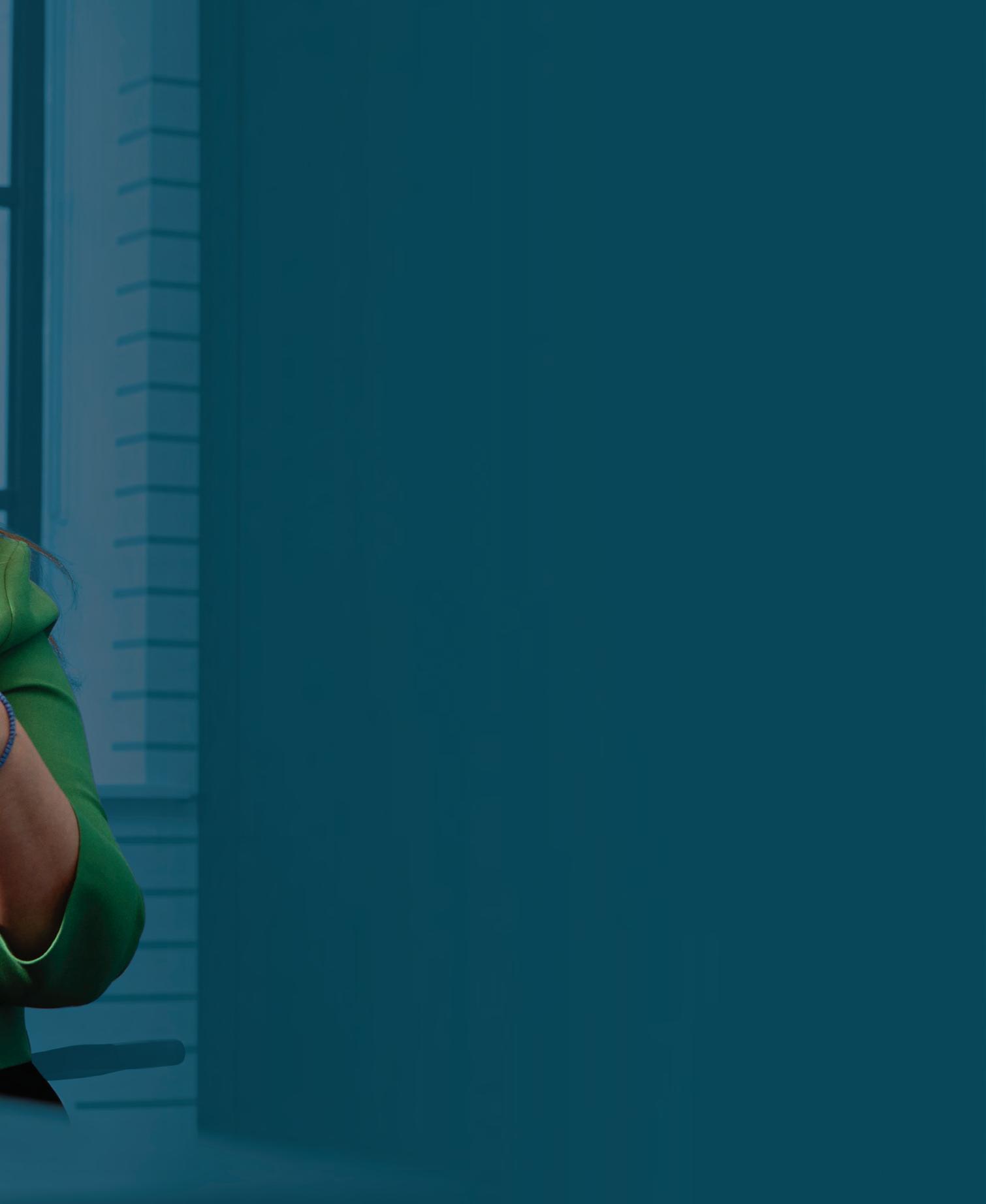
Elpi Petraki, chartering, operations, and business development manager at ENEA Management in Greece and newly elected president of WISTA International, has a passion for the maritime industry — and also for ports.
When speaking to IAPH managing director Patrick Verhoeven about changing people needs and digitalization of trade, her appreciation of how “beautiful” ports can be came through.
Elpi therefore also has an interest in cooperating with ports to support modernizing the industry, especially through digitalization and was keen to hear about the IMO and IAPH single-window symposium, which was held in early January 2023 in partnership with BIMCO and support of the International Port Community Systems’ Association.
“The symposium was meant to raise awareness among the IMO member states.
While they should know in the first place that there is a deadline coming in January 2024 for member states to have a single window for the exchange of maritime data in place, the experience with the 2019 FAL requirement for electronic data exchange between ship and shore showed that not a lot of countries were ready by the deadline. Some are still struggling with the implementation. So, we spoke about this to the IMO and BIMCO and said why don’t we do something together where people can pick up the information, not just on the legal requirements, but also what it means in practice and hear from ports or governments that have systems in place. So, they’ll learn from that experience because you’ve got very different situations to start off with to embed the single window,” Patrick said.
Elpi is keen to see the implementation of national single windows using an example of her everyday life to illustrate why. “We have a vessel arriving at the port today and there’s bad weather, so the vessel will need to wait there for three days. The other option was for it to wait in another port that was five hours away, and where the
IN CONVERSATION WITH ELPI PETRAKI
weather would not have been so bad, but to ensure the vessel does not lose its place at port, it must go to the original port as planned. This unfortunately means that due to the extended port stay, the vessel will consume more fuel which will lead to higher emissions while in port, and regrettably, the crew will endure less than favorable sea conditions. So, I think we really need to collaborate here to improve flexibility and minimize port wait-times.”
Patrick shared an insight into countering this on the port side. “At least on paper, a lot of progress has been made in the sense that the mapping out of the whole port call process has been done very thoroughly by the International Task Force Port Call Optimization and the Global Industry Alliance, which works under the IMO. Also the data sets that are needed to optimize a port call have been included in the guidelines for the maritime single window. So, all that has been done,” he explained. Patrick therefore thinks that saying we lack standards is no longer an excuse today. That said, “We need to encourage the implementation. I think that’s the next important stage.“
Making amends Elpi agreed. The single window regulation is not the only measure that keeps the maritime world on its toes at the moment. Since January 2023, two IMO regulations aimed to reduce carbon emissions are in place: the Energy Efficiency Existing Ship Index and the annual operational carbon intensity indicator (CII) and rating. Ports are therefore not the only stakeholder that works on embedding an increasing amount of digital data collection and transmission into its daily operations. However, currently, the CII rating calculation is slightly flawed as it penalizes ships that make frequent calls to ports to load/discharge cargo, as this causes higher fuel consumption and increases the risk of port delays, which is something Elpi also criticizes. “If a vessel adds a long ballast trip into its schedule, it could potentially have a superior CII rating. However, this is neither logical or possible. Vessels make port calls as part of their voyages. So, this adds to the complexity of implementing CII and that will be tough for shipowners.” She added, “but I don’t like to be pessimistic and I’m sure we will find a way. Whenever a regulation comes into force, there is a period of initial uncertainty where the kinks need to be ironed out, but we always find a way to succeed. And this is where collaboration between all stakeholders needs to be insisted upon.”
Unfortunately, port operations are not overseen by just one entity, as Elpi pointed out. “There are private and state-owned ports all around the world, which operate differently. It’s easier for the big liner vessels because they go, mostly, to larger ports on specific routes, which tend to be well organized and have good systems in place to manage port traffic. For these vessels it will be easier to manage.”
Patrick responds with concern. “Of course we’re also looking with great attention to what is going to come out of the CII because many ports give incentives to ships that are performing well environmentally and we developed the Environmental Ship Index, which gives an emission profile of a ship. And it was initially designed from an air quality point of view but we’re seeking to update the CO2 component, taking CII into account. But if we hear from various shipping industry sources that it’s not going to work and it gives the wrong picture, then we have to be careful in including it in our calculation to give a reduction or an incentive to the ship owner.”
The IAPH managing director is therefore keen to hear, “What are we supposed to do on the port side? Are we supposed to use it to give incentives in port or is it better to wait until this all stabilizes and we’re confident that it gives the right performance picture of a ship? That provides uncertainty for us as well.”
Elpi has a concrete idea. “I think what you can do is make sure that the waiting time is solved. It’s very difficult but we need to make ports understand that their part in this is the waiting time of the vessel at the port and waiting to load or discharge. I think that is crucial.”
She also anticipates the regulation to be a bit more flexible in future. “I think correction factors are being added to the calculation, for example to accommodate a short trip or bad weather. Such realities were not considered when the regulations were developed, but the industry raised awareness of the complexities, so changes can be made to accurately reflect the range of ship operations.”
The people side
It is not only regulations that change but the way we work. “That came out clearly during discussions at the maritime single window symposium,” Patrick said.
Elpi agreed and elaborated. “We have a new generation of tech-savvy seafarers and maritime professionals who will undoubtedly take advantage of all the new digital solutions available. However, we also have an experienced
“Make sure that the waiting time is solved”
ELPI PETRAKI ENEA Management
older generation of crew members – who are indispensable – but have a different attitude towards change sometimes. They have had to adapt every time a regulation comes in and the vessels are required to submit new information. It is difficult for them, and I do see that every day.”
Standardization is therefore also key in this regard. “We need to try and make companies understand that they have to have one way of doing things and have the same systems in place,” Elpi said.
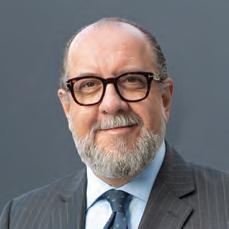
Keeping people in the industry and onboard is one issue, the other is talent attraction. “The industry has grown so much that the problem is not that we struggle to recruit seafarers, it’s that we need more than we used to,” she said. “Since the pandemic we’ve had to rethink how to attract people, because what people look for in a job and their priorities have changed. People want a job that is sustainable and that makes them happy. And this is where women come in as well. We need to create the right environment for them onboard the vessel.”
This starts with recognizing the importance of diversity in the workforce and implementing policies that support women and create safer, fairer working environments for everyone. However, in some cases this starts at the most basic level, such as by providing separate bathroom facilities for women – in ports – but also onboard vessels.
Within ENEA Management, the company Elpi works for, women have held positions onboard for many years.
“It is a small company so things are much easier because you know each person. We have always placed women in an environment that would be suitable for them. They have raised through the ranks and are very valuable members of our company.”
Recruitment – and one specific issue – is also something ports look at, as Patrick said. “The shortage of workers, finding people interested to work in the industry, is something we see on the port side as well – partly, this has to do with reputation. The impression that it involves manual labor. What doesn’t help either, and this may not be for every port, but crime can sometimes distort the whole perception of a port. Take the drugs that are coming into big European ports. Organized crime gangs sometimes approach young people working in the port sector, on terminals and so on, to say you want to earn an extra buck? Maybe you can tell us where that container is being parked? These stories always end badly and hit the news big time. To the point that you now got people
who are saying: I don’t want to work in that industry.” He added, “And I think it’s maybe a little bit similar to shipping when something goes wrong, we are in the media and on the front page.”
Elpi agreed and explained that “it’s our responsibility to make people realize how important a port is in their lives. It is not just a part of their city that they don’t want to go to. It is a part of their city that is keeping the country alive. And the same goes with shipping. We need to think about how to raise awareness of the importance of shipping and ports and invest in some marketing for the sector”.
Something that is already being done in Antwerp where Patrick is based. “Every month, people receive a printed newsletter about the port and what it means to the city, our local newspaper prints an article every Monday on the port, not on what goes wrong, but on the people who work in it, the diversity of jobs. So, there are a lot of initiatives done to bring the port closer to the community.”
Both Elpi and Patrick also shared examples of good port community relations. “I was in Ghent recently and the port operators seem to work well with their local stakeholders, even if they have scrap, dry bulk, and even a coal terminal — not very clean products. They seem to have found a very harmonious relationship and you can see that the houses are almost next to terminals.”
Elpi recounts. “In 2020, a port company in Peru received the WISTA International Corporate Diversity Award. They started working with the local community to try and involve more women because there were many single women, and many with kids, who didn’t have any source of income. So, they looked at how they could employ women at the port, because as you said, manual labor is not needed anymore due to new technologies, so there were many roles available that would be suitable. This company has been working with women in the local community for 20 years now, and the economic and social situation within the community has improved significantly as a result.”
Patrick sees room for collaboration between WISTA and the IAPH here. “Maybe that’s an area that we can do more as well.” Elpi replied, “We can help there wherever you need it. I think we all have to realize how important people are for everything. Digitalization is here to stay, and it will improve our lives, and the way we work. But at the end of the day, we need people everywhere. So, we need to invest in them if we want to improve our lives and to build a sustainable future for our kids.”
07 IN CONVERSATION WITH ELPI PETRAKI
“We also see a worker shortage on the port side”
PATRICK VERHOEVEN IAPH
Photo: IAPH
PERSPECTIVE SINGLE WINDOW SYMPOSIUM
Mandatory MSW: One year to go
F rom 1 January 2024, it will be compulsory for global ports and IMO member states to operate maritime single windows (MSWs) for the electronic exchange of information required on ships’ arrival at a port, their stay, and their departure. This mandatory change follows the adoption by IMO’s Facilitation Committee of amendments to the FAL Convention.
With this key date in mind, IMO hosted a two-day symposium in January jointly organized by IMO, IAPH, and BIMCO with the support of the International Port Community System Association.
Opening the symposium at IMO’s London headquarters, IMO secretary general Kitack Lim said that making MSWs mandatory was not only “a significant step toward accelerating digitalization in the maritime trade,” but also “an opportunity for all stakeholders in

shipping and a necessary step forward.”
In his opening remarks IAPH’s president, captain K. Subramaniam Karuppiah, commented that the MSW is an essential step in the digitalization roadmap to strengthen the resilience of the maritime supply chain developed by IAPH and the World Bank. One of its key messages is that any move toward increased digitalization in the port and maritime sector will require a high level of political commitment as well as national-level frameworks to manage change. Nikolaus Schües, president designate of BIMCO, commented that a ship’s crew approaching port typically needs to report in through to 15 different windows, which “is 14 too many.”
Implementing the right system
His remarks reflected that, across the world, ports are at very different stages in their jour-
ney toward digitalization. Warsama Guirreh, general manager of Djibouti Port’s community system explained that Djibouti Port handles both his country’s trade by sea and 90% of that of neighboring Ethiopia, so creating an MSW is in the interest of both countries.
Guirreh was clear on the benefits of operating an MSW: improved accuracy and visibility to the whole port community. He said the process of approving declarations had shrunk from a few days to a few hours. Since port clearance requests were digitalized in 2016, the harbor master can finalize the process in less than an hour.
Leonel Molina, head of customs and trade modernization and innovation at the Guatemala Customs Administration reported about the authority’s efforts to take the initiative to implement such a system.
The administration has identified where bottlenecks exist in the current system and is working with the public and private sector, as well as the IAPH and World Customs Organization guidelines for cooperation between customs and port authorities, to develop a system that will deliver its technological transformation.
IMO member states also have access to assistance in their implementation journey. Examples cited included support from the World Bank to Fiji, Antigua and Barbuda receiving technical expertise from Norway through the IMO itself with a system devel-
oped for small island developing states, and the SWiFT pilot project in Lobitio using the same system being implemented in Angola with the support of Singapore.
Under its auspices, Singapore’s Maritime and Port Authority (MPA) is implementing a pilot with Angola to establish a MSW for medium ports. Gavin Yeo from the MPA commented that the project is currently developing prototypes for the Angola team on which they will provide feedback so that improvements can be made during the build process.
Easing the burden
There was widespread agreement during the symposium that one of the greatest benefits of digitalizing the port call process would be to improve the exchange of information on arrival in port to multiple agencies on shore.
Ben van Scherpenzeel, chair of the International Taskforce Port Call Optimization, noted that, once berthed, between 15 and 20 parties visit a ship to provide services requiring the exchange of a large amount of information. If that is not coordinated, the chance of the ship’s departure being delayed is high.
One port whose digital transformation is far more advanced than many is Singapore.
Yeo detailed how they and the port of Rotterdam are putting a plan in place to increase efficiency by streamlining the administrative process through digitally sharing standardized port call and operational data along a corridor between the two locations.
He encouraged those who might feel intimidated by the prospect of embarking on such a transformation to break down the challenges into smaller pieces and to focus on one before moving on to the next.
In alignment
A common theme of the symposium therefore focused on the importance of collaboration and interoperability of systems.

In a session that focused on the need for robust industry standards to harmonize electronic data exchange, BIMCO’s manager of maritime safety and security Jeppe Skovbakke Juhl said that the IMO Compendium has given a stronger, bottom-up approach to the implementation of MSW than had been the case in the past.
ABOUT THE AUTHOR
VICTOR SHIEH is IAPH’s communications director. He commenced work for IAPH as a communications partner for its World Ports Sustainability Program, which launched in 2018.

The compendium consists of an IMO data and IMO reference model. Nico de Cauwer from the Port of Antwerp-Bruges described it as “the overarching shell of everything to do with trade of cargo.”
MSW is not just a concept
In drawing two days of examination to a close, IAPH managing director Patrick Verhoeven and Skovbakke Juhl agreed there were several lessons to be learned.
Verhoeven said that “trust among stakeholders within maritime is a problem, not the technology. The main challenges we face are analogue not digital ones,” he quoted symposium speaker Martin Humphreys of the World Bank. Verhoeven also added that pragmatism was needed as an MSW can be standalone or embedded in an existing or new system depending on the level of digitalization already in place. He emphasized the need for use of proven standards, which are available. “There is help available to get a port’s digitalization journey started and so there is no excuse not to start immediately.”
“Interoperability is vital for success, as is close communication on all levels and a holistic approach to integration. The MSW is not a concept but a platform that is there to be used,” Skovbakke Juhl added.
Guidance is available here: bit.ly/IAPHandWorldBankreport
PERSPECTIVE SINGLE-WINDOW SYMPOSIUM 09
“Break down the challenges into smaller pieces and focus on one before moving to the next”
GAVIN YEO MPA, Singapore
Pictured: Speakers during the maritime single window symposium at the IMO in London, UK.
IMO | V ictor Shieh
Photos left to right:
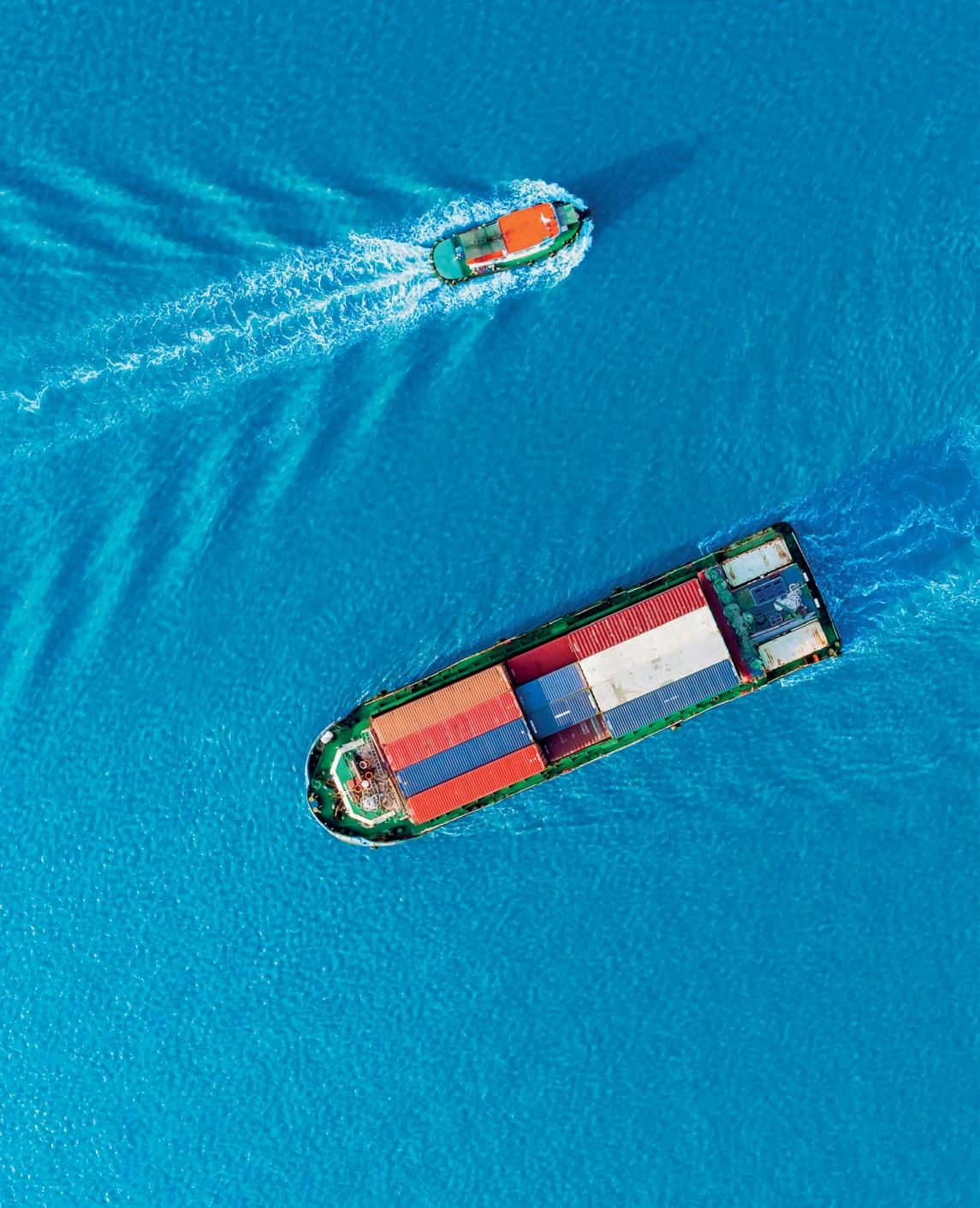
10 FEATURE ELECTRIFICATION
Photo: Getty Images/Suriyapong Thongsawang
Our small friends
Electrifying transport stands to reduce energy use substantially, making decarbonization a smaller hurdle to overcome. Despite popular belief, shipping is not necessarily locked out
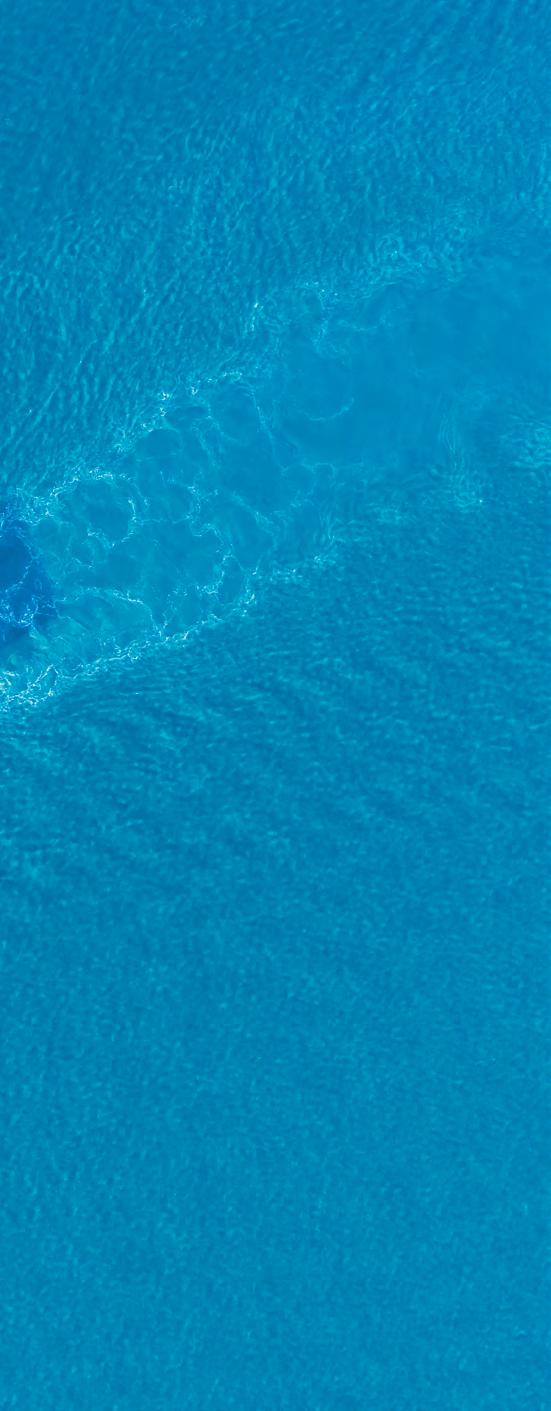 CHARLIE BARTLETT
CHARLIE BARTLETT
In mid-2022, US company FleetZero declared its intention to outfit a vessel with its 2 MWh containerized battery pack system as a proof of concept. Although far from the only company to have this idea, FleetZero had a unique vision of where its batteries would fit in: feeders. Former maritime engineers and founders Steven Henderson and Mike Carter reasoned that operated on short routes, feeders could be equipped with hot-swappable batteries, which would be charged on shore and loaded aboard vessels by the same quay cranes that load their cargo.
For perspective, one FleetZero battery pack would be enough to run Yara Birkeland ’s two 900 kWh azipull thrusters for just over an hour and would be able to match the vessel’s battery capacity if just four such containers were loaded, although FleetZero envisions vessels of 1–2,000 TEU, giving over an entire stack.
Globally, much of the feeder fleet, as it stands, is ancient, not very efficient, and likely to fare badly in IMO’s recently introduced carbon-emission regulations. However, a key element of the FleetZero proposal would be to decommission older engines and retrofit the ships with much smaller electric drivetrains, in a literal example of electrification, which would potentially give a new lease of life to their elderly ships that are still required on feeder services.
Electrification may have been written off by many in shipping as of limited use and unworkable, but other sectors of transport are electrifying rapidly in one way or another.
Positively shocking
Electrification is regarded by governments as pivotal to decarbonization because better efficiency achieved with electricity means that less energy is used overall. For transport, the case is open and shut.
FEATURE ELECTRIFICATION
A V8 may be good at generating power, as well as entertaining sound and fury. However, to the chagrin of motorsport fans, a small, near-silent electric motor can produce three times that power for a given energy input. Just compare the acceleration of a Tesla car with a fast, upmarket vehicle with a high-powered combustion engine.
When researchers want to express the total amount of energy use in a system, they often use million metric tons of oil equivalent (MMtoe). The power output of a solar panel or the wood consumption of a Nepalese cooking stove, both grid-connected and off-grid systems, can be measured in MMtoe. Electrifying processes, be they heating, lighting, high-speed rail, or quay cranes, decrease those processes’ MMtoe demand. This makes the prospect of powering them with renewable energy a lot less daunting.
Currently, there is a long way to go on electrification. According to Enerdata, the world’s electricity demand in 2021 was 20.4% of final energy demand, a one-point increase on 2020. Some countries have it better: Norway leads the world at 47%; mainland China, the world’s largest primary energy consumer, sits at 27%.
The good news is that we will not need to construct enough renewable energy capacity to cover the remaining 79.6% of global final energy demand, which stood at 14,406 MMtoe in 2019, according to the International Energy Agency. As the share of electrification increases, much less energy will be required overall.
Wherever electrification can be supported by wires and cables — freight trains, ovens, quay cranes — it is simple to make the case for electrification. Where applications become more challenging is when there is no possible grid connection — for example, for cars, ships, planes, and trucks, which account for ~30% of world energy usage.
Truck emissions per metric ton-km are considerably higher than those of large ships and this is because specific energy usage is substantially greater for trucks. Energy usage dynamics within the current fossil-fueled paradigm give us a clue as to where electrification would provide the best bang for buck. CO2 emissions from road freight are around 80 g per metric ton-km and a large container ship can emit less than 5 g per metric ton-km.
In the electrification stakes, this could give shipping a big advantage. Unloaded, Volvo claims that its electric truck has an energy usage around half that of a diesel equivalent — 1.1 kWh/km. Meanwhile, Tesla’s first electric truck, which completed an 800 km journey in December 2022, claims 1.7 kWh/km. The small problem with this claim was that its cargo was a shipment of packets of Frito Lay’s crisps, which one analyst described in Reuters as not “in any way a proof of concept”.
Batteries pose a considerable problem for trucks. Designers have to worry about kerb weights, and the weight of the batteries themselves makes for a considerable limitation on payload, something that is much less of a problem for ships.
Although the actual payload fraction of the Tesla Semi is a jealously guarded secret, it is estimated at around 20 metric tons, a little more than the weight of the vehicle itself.
Suggestions for overcoming this limitation include overhead catenary lines on motorways. This has been suc-
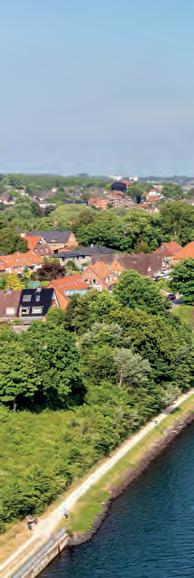
cessfully tested in Germany using trucks with specially developed folding pantographs. The Federation of German Industries has recommended that 4,000 km of highway should be strung with overhead catenary power lines, which, it says, would accommodate 80% of Germany’s truck traffic, saving 7 MMt of CO2 emissions every year.
Nevertheless, an unwillingness to build overhead catenary wires, thanks in large part to spiraling construction costs, is the reason 39% of German trains are still diesel-powered. These constructions do not get any less expensive on the Autobahn, either.
With a pressing need to electrify, and finite resources with which to do so, it is prudent to examine how best to direct investment. Could a modal shift be the answer?
Feeders of convenience
Shipping likes to compare the most efficient ships with the least efficient trucks, and although this comparison is often used as a bludgeon by the maritime industry against other transport modes, it is fallacious. For a short-sea feeder ship of less than 1,000 TEU — shipping’s readiest alternative to trucking — the emissions are closer to 35 g per metric ton-km, close to half that of trucking. On the other hand, there is no large contingent of trucks gunning it from Shanghai, mainland China, to Northern Europe, for comparison’s sake.
“Smaller ships are approaching conventional road on carbon intensity,” explained Tristan Smith, UMAS consultancy co-founder and associate professor in Energy and Transport at the University College London, UK. “That includes smaller ships typically used on feeder routes.”
He added, “One of the overstated simplifications of supply chain emissions is that shipping is more efficient than trucking. That is only true if it is a big ship. It does not make sense to use the carbon intensity of a massive VLOC [very-large ore carrier] or VLCC [very-large crude carrier] when you’re talking about global substitution.”
At the same time, “a lot of the smaller ro-ros are quite carbon intensive because they go fast to provide the service levels, which would be competitive with road freight. And then, you have to look at the port emissions.”
In fact, the available research seems to suggest that ports can make or break the case for the modal shift from road to sea. In a review, Modal shift from road haulage to short-sea shipping, Zeeshan Raza, Martin Svanberg, and Bart Wiegmans found that the efficiency of ports plays an outsize role, including attributes such as “port harmonization, administrative and customs procedures, hinterland connectivity, and electronic data identification systems” are “crucial to ensuring a modal shift to integrated shortsea shipping”. The same paper quoted one study, Incentives to reduce port inefficiency: A theoretical approach, which indicated that in any serious effort to shift cargo from road to sea, port inefficiencies could not be ignored, and that “promoting port efficiency might be a more suitable target than subsidizing shippers to use short-sea shipping”. However, the main issue feeds into inefficiencies both in port and under way. The feeder fleet of today is one of last resort. The largest ships in the world in their day, container vessels in the sub-4,000 TEU size bracket are
now old, unwieldy gas guzzlers. Many of them are also general cargo vessels with container capacity, making them slower to unload in port.
The IMO’s deeply unpopular carbon intensity indicator (CII), which entered force on 1 January 2023, will do these vessels no favors either. Maersk Broker described today’s feeders as “old” and “no longer economic,” adding that they “will have difficulty getting a workable CII rating.”
It is not as if the industry does not have need of small ships. Amid capacity crisis in 2021, box rates of US$20,000 meant that such vessels could pay off their secondhand purchase costs within days. Meanwhile, conventional reefers, a dying breed, have been killing it, according to Drewry, collecting a record 180 cents/cubic foot/month in some cases. These vessels are tiny, many are more than 30 years old, and they are not quick to unload, but they have been enjoying record demand, said Drewry reefer analyst Philip Gray in a recent webinar.
Despite this, shipowners remain opposed to building small ships, prioritizing the snagging of market share and the squeezing-out of competition promised by 20,000+ TEU giants. An abundance of vast newbuilds crashing onto the now oversupplied and miserable box market threatens to make this problem even worse, with even larger and more unsuited vessels cascading onto feeder trades, leaving smaller ports stranded.
Shipping’s Formula One
Nevertheless, it does not have to be this way. To stand any chance of getting trucks off the road, feeders ought to be nimble buccaneers, using the latest shipbuilding knowhow to maximize cargo space within a small footprint and shallow draught, allowing them to call at smaller ports closer to their cargoes’ destination. In one example, Seatrade Reefer Chartering has ordered four 1,800 TEU container ships with 1,200 reefer slots each for a fast, direct, and dedicated service. While these are not feeder ships, the company’s strategy demonstrates what can be done with smaller vessels on key routes.
Furthermore, as much as the automotive industry uses Formula One as its testbed for new technologies and not vast production runs of thousands of vehicles, shipping stands to benefit from the small-scale risk-taking that feeder vessels allow.
Samskip, a Rotterdam-based feeder operator intends on having a bit of fun with it, is running four of its vessels on 100% biofuel, effectively reducing their emissions by 90%. In due course, it will be experimenting with Value Maritime Filtree carbon-capture devices, which coupled with biofuel, could make them the first negative-emission ships.

Shipowners’ general unwillingness to build smaller vessels leaves a gap in the market, which companies like Yara, ASKO, and DB Cargo, who need them, are filling themselves. For these vessels, electrified propulsion is therefore no accident.
While ships with conventional engines have had good results from slow-steaming and de-rating, and going slow is an excellent efficiency measure at scale, electric propulsion is good at supporting the higher speed that feeders require to operate at their full potential and offer better competitiveness with road transport.
“Shipping has very different fuel options to decarbonize. For trucks it is basically two options — batteries or hydrogen fuel cells. Synthetic diesel for trucks is very inefficient to produce,” Delphine Gozillon, shipping officer at Transport & Environment, said to Ports & Harbors. However, she added, “I wouldn’t say that one is more ready to decarbonize than the other, and modal shift to shipping should certainly not be an excuse for the maritime sector not to decarbonize.”
By now, the principle of economies of scale has been applied in shipping, fully realized, and done to death. Struggling with a new overcapacity crisis of its own making, shipping’s addiction to massive tonnage has also left smaller ports out of the equation, actually harming the industry’s green value proposition. However, applied in miniature between trucks and tiny, little feeder ships, there could still be gains to be made.
13 FEATURE ELECTRIFICATION
Photo: Björn Wylezich/Alamy Stock Photo
KRIS DANARADJOU Deputy general manager, HAROPA Port
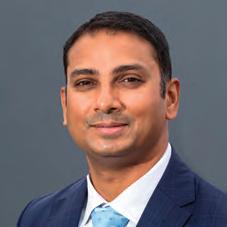
Wake-up call
HAROPA Port is setting on short-sea shipping –and countering structural deficits that hold back its further development in Europe
aritime transport over short distances, or short-sea shipping, includes coastal shipping, feedering or transshipment, combined river and sea transport, cross-channel trade, as well as highly local coastal trade. Such maritime flows along coastlines and between the European Union’s continental ports are a good solution for all types of freight.
M
Liquid and dry bulk are most frequently carried by this type of transport but container can also be transported on smaller ships. Most recently, short-sea shipping has been hailed as a solution to effectively contribute to the ecological transition thanks to a carbon footprint that is 80% smaller than that of road haulage.
In Europe, even if truck transport is still the norm by far, short-sea shipping already represents over 60% of EU transport by sea and around 40% of movements within the continent.
In France, short-sea shipping went from 194 million metric tons (MMt) to 158 MMt between 2011 and 2021. HAROPA Port, however, is a strong believer in its relevance and is developing it in terms of ecosystem and necessary infrastructure.
Catching up
There are a few reasons why Europe is lagging behind that are partly structural. Dozens of small shipping lines dedicated to short-sea were set up in the 2010s and today only four or five remain; the others, which were bought out by major shipowners, are now dedicated to feeder activity. This means that it is urgent for new actors and new lines to emerge.
Deepsea and short-sea shipping must also move closer together. To enable this, HAROPA Port launched the cat-flap project in Le Havre that will provide a direct river connection between Port 2000 and the historical port starting in 2024.
Short-sea shipping has numerous advantages for adoption along the Seine Axis: major industrial and consumer hinterlands, the connectivity of the seaports of Le Havre and Rouen with services to five continents, market-leading logistics expertise, especially for cargo consolidation in Rouen, some 20 Seine Axis container terminals, and 30 dedicated quays for reception of heavy-lift cargo, and so on. This network will be supplemented by the expansion of the Radicatel terminal – a terminal between Rouen and Le Havre – with the addition of 220 m of quay to the existing 400 m, precisely with the aim of developing short-sea services with dedicated storage facilities.
Maritime transport over short distances is also dependent on greening fleets of dedicated vessels. With this in mind, HAROPA Port is deploying electrical supply connections at its terminals – there are currently 13 such connections – and is setting up bunkering facilities for alternative fuels. Working with its partners, the port is also considering to develop direct links to handle flows with Ireland, the United Kingdom, Northern Europe, Poland, Turkey, and elsewhere.
Convinced that short-sea shipping is the answer to the environmental and societal issues surrounding short-distance transport, HAROPA Port is working to develop a market offering that is capable of providing a competitive alternative to nothing but trucks.
WAKE-UP CALL ELECTRIFICATION 14
Photo: HAROPA Port
Closing the gaps
Q: Introduce your company and how you work with ports on infrastructure projects
A: As a company specializing in ports and terminals, we work closely with port developers and operators to identify and implement solutions to their challenges. We bring extensive maritime knowledge and expertise to the table, having worked with ports in various parts of the world, especially in APAC. We aim to help ports improve operations, increase efficiency, achieve sustainable growth, meet net-zero emission goals, and ensure return on capital invested. Ensuring ports are resilient to climate change impacts such as flooding, heat, and extreme weather is essential to ensure ports are reliable to their customers. My role has been to critically analyze the problems in the ports and ensure the delivery of cost-effective solutions. For instance, ports could have congestion issues that require us to study the expected future traffic, turning basin, quay turnaround, and intelligent solutions that could be brought into play to make the port operations more efficient.
Q: How do you see the current state of port infrastructure?
A: Its current state must respond to its market, rapidly evolving to meet climate impact challenges, supply chain disruptions, and operational effectiveness through digitization and energy transition needs. With increasing global trade and digitalization, ports must invest in digital infrastructure to respond quickly to changing customer demands. In addition, there is a need for ports to be smart so that they can anticipate supply and demand changes and ensure effective operations and a reliable partner in the supply chain. Against the backdrop of COVID-19-related supply chain disruptions, the trust is toward building an efficient port that plays the role of a vital cog in the gear of the overall global trade and its supply chain. In addition, energy transition
SHIVAPRAKASH RAO Head, consulting and energy transition, BMT
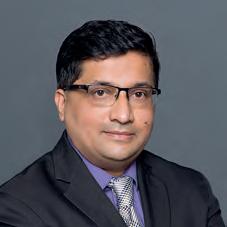
and net-zero goals mean ports must go green, adopt low-carbon fuels such as LNG, and prepare for future zero-carbon fuels such as hydrogen and ammonia. The market potential for bunkering is also on the rise, with the increased use of low-carbon fuels and the push from the shipping industry.
Q: What do ports need to prepare now for a changing infrastructure landscape?
A: Ports must prepare by aligning with market demands for operational efficiency, climate change, energy transition, or supply chain resiliency. While smart ports with digitization are an answer to operational efficiency, the recent geopolitics and supply chain disruptions have nudged nations to either nearshoring or inshoring manufacturing, which would impact the trade flow and orientation of the existing ports. Hence, ports should reconfigure their yard space, invest in new technologies, improve operational efficiency, and streamline processes to attract trade flows. Examples that could make a port attractive include the supply of renewable electricity to calling vessels, infrastructure to bunker LNG, green methanol, green ammonia, and green hydrogen. Ports could
reconfigure their infrastructure to support offshore wind development during the construction and operations phases, which would mean more revenues. Additionally, ports must invest in training and development to ensure their workforce has the skills and knowledge to ensure operational effectiveness.
Q: How can ports close the gaps?
A: Ports are essential in fostering a nation’s economic development and connecting the country to more comprehensive trade. Ports are long-term investments, and to close the gaps, ports must collaborate with stakeholders, including suppliers, customers, and government agencies, to attract trade flows and contribute to the supply chain’s resilience. By working with supply chain partners, ports can identify and implement solutions to their challenges, improving their operations and increasing their competitiveness. Additionally, ports need to focus on sustainability and environmental stewardship, which is becoming increasingly important to customers and stakeholders.
Q: How do you engage with ports?
A: Our engagement with ports help them identify and address their key challenges and opportunities from a supply chain perspective and ensure profitability during the ports’ economic life. COVID-19 has shown us how vulnerable the supply chain is, and disruptions can cascade and amplify to create congestion at ports owing to the bullwhip effect. We aim to help ports become resilient to external shocks, improve operations, and increase efficiency while promoting sustainable and responsible practices. Engagement with ports helps them achieve their goals and success in a changing and challenging global trade scenario while managing the impacts of climate change.
Shivaprakash Rao, head of consulting and energy transition at BMT, shares his 20-year experience working with stakeholders in port terminals to achieve their goals
CLOSING THE GAPS BMT 15
Photo: BMT
Q&A
Dr Phanthian Zuesongdham
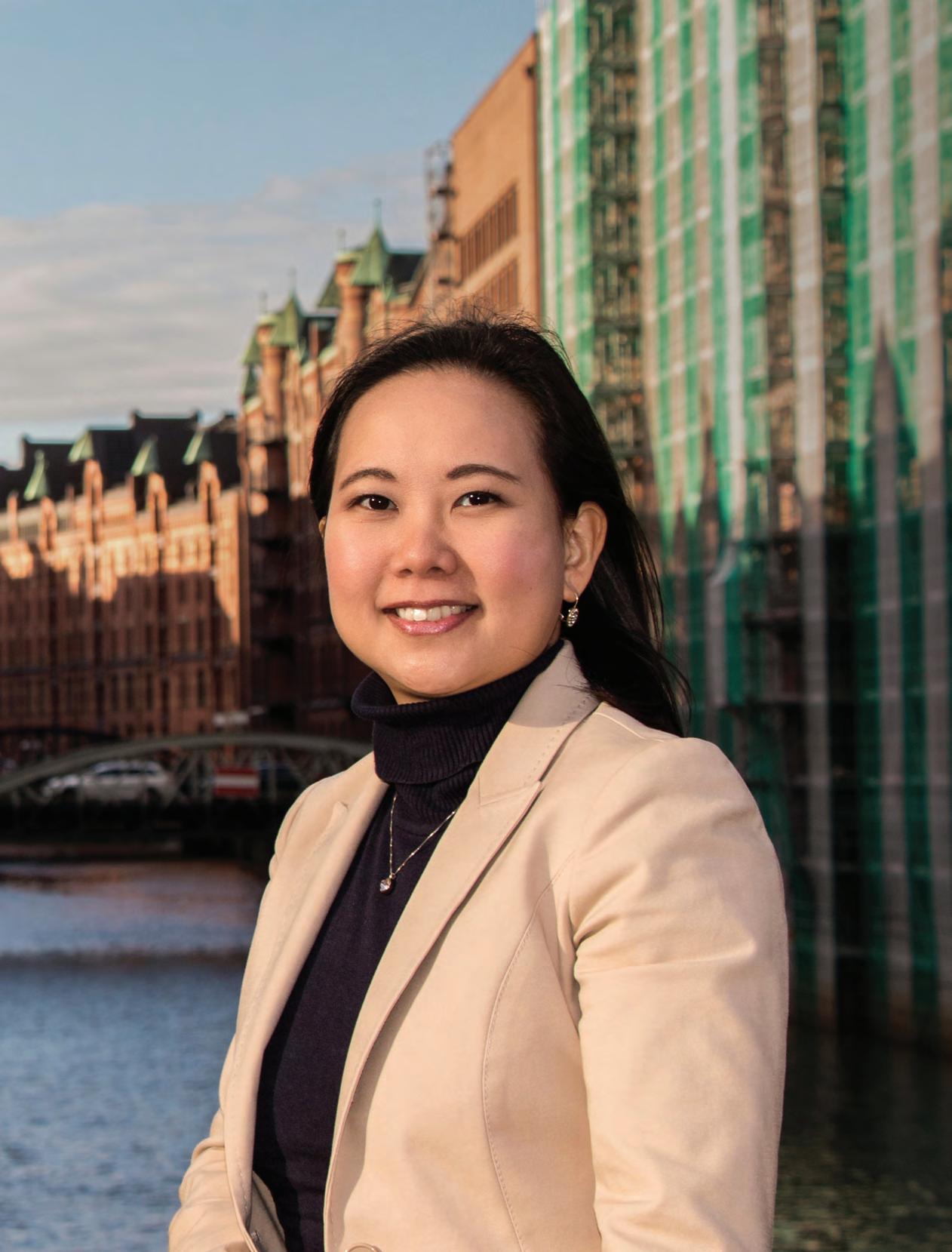 CHARLIE BARTLETT
CHARLIE BARTLETT
Dr Phanthian Zuesongdham has been with the Hamburg Port Authority(HPA)since2010.As thecontactpointforquestionsofquay-and land-sideinfrastructure,navigational safety,andonwardmodaltraffic,including rail,HPAisresponsibleforresource efficiency,sustainableplanning,andthe implementationofinfrastructureprojects intheport.Ithasmuchtoofferfora processmanagementandautoma-tion expert,withtheport’snarrowberthing windows,thankstotides,makingevery secondcount.Withsuchapresson efficiencies,aswellasan ever-increasingneedtocutemissions andimproveenergyuse,DrZuesongdhamfindsthatports’traditional businessmodels simplyarenotup to the job.
“Before, the model was that as the port, we are just the landlord. The companies renting our land are there for decades. So, there is not a lot of dynamic development and new customer segments,” she said to Ports & Harbors. “We see now that the traditional business portfolio alone is not really sustainable socially, ecologically and, at the same time, economically.”
Dr Zuesongdham’s job is therefore “to identify what kind of added services can be provided in the port and what roles need to change so they better serve the demands of port customers. It is not enough just to rent the land to a logistic company. This is conservative and will not sustain for much longer because it limits how you can do business and justify your role in the industry.”
Expanding your horizons
Dr Zuesongdham added, “Right now, the port is more than just a place to unload ships, it is a nucleus where the industry can be developed – look at the
recent projects at Hamburg, Antwerp, or Rotterdam.” Indeed, more than 200 businesses have their offices within the Port of Hamburg premises. The Port of Rotterdam, meanwhile, is home to 120 companies, many of them only tangentially related to shipping.
Rotterdam’s Port CO₂ Transport Hub and Offshore Storage project plans to store 37 million metric tons of carbon emissions from the port and its tenant industries under the North Sea. Shore power and power generation will be of critical importance in the future, Dr Zuesongdham argued. “These ports are evolving into energy hubs, so they can serve this changing demand. Ports are now aiming at being zero emission or climate positive.”
Traditionally, port automation has been a matter of individual cranes or vehicles but as Dr Zuesongdham explains, that is a very small piece of the puzzle, with automation entailing entire systems, with a great deal more potential improvement than what is possible with individual machines.
“We are working more in workflows, which is one type of automation. So we have machines that we are deploying in our daily operations, but if you would like to execute a certain task with these machines, the way you do it is to program them, and they do the operation by themselves. So, in HPA, we concentrate on the operation and maintenance of infrastructures as well as in planning and building those – the whole asset life cycle of infrastructure, and not just individual machines or objects.”
Integrating automation
“Let’s say, for example, you may have remote-controlled lock management, so you do not need a person to control at the lock anymore. Lock operation entails many tasks – there are more than one
button to press – but you can perform this entire group of processes remotely. So, we are not just defining automation in terms of whether something requires human interaction or not. Especially during labor shortages, automation is a good instrument to help overcome this challenge.”
With blockages and queues, lack of empty containers, hurry-up-and-wait situations, and all manner of other bottlenecks, the last few years could certainly have benefited from this approach, Dr Zuesongdham explained.
“We have all the technologies at hand, but once a crisis hits, we are lacking the important information to make a better decision. So, during the supply chain crisis, the customer must be instantly informed that their cargo will not arrive within the timeline to allow rearrangement of their processes. But this is not happening automatically because it was achieved primarily by people calling each other or doing web searches.
Making a connection
In the hope of bringing about this new world, Dr Zuesongdham is leading the automation working group of the IAPH Data Collaboration Committee. Part of the aim of the working group is to overcome the initial hurdles to automation, in a setting where, she said, everyone has a “common interest”.
“We could address the technological issues very promptly,” she said. “But the pain point in implementing or promoting automation within our port is not technology – it is about people. The willingness to change, to do things differently, and also to prioritize the right project for investment case.”
There is a certain degree to which ports will have to collaborate on standards and frameworks in a way they have declined to do before. “You would need a digital infrastructure requirement in place, and that is a matter of how you have to change your regulatory framework in your country. But this is actually quite straightforward and the process is in place. But once you have that – how you can get people on board? This is the major challenge.”
Which is more interesting – automated ports, or automated ships? “I have to say that I probably couldn’t really make that choice. For me, it is about everything, making our lives easier, and safer. And protecting our climate by exploiting fewer resources.”
17 INTERVIEW DR PHANTHIAN ZUESONGDHAM
Hamburg Port Authority’s head of Port Process Solution, Dr Phanthian Zuesongdham, talks automation, collaboration, and seafaring dreams
Photo: Hamburg Port Authority
“Right now, the port is more than just a place to unload ships, it is a nucleus where the industry can be developed”
Stacking
Geographical spread of automated container terminals
Fully automated Semi-automated
International boundary
Claim, dispute, estimate, or unilateral boundary
UN buffer zone
Joint development zone limits
The following analysis is an abridged version of the Container Terminal Automation report by the Metro Freight Volvo Center of Excellence.
IAPH affiliates and in-house researchers Dr Geraldine Knatz, Dr Theo Notteboom, and Dr Athanasios Pallis looked at the drivers of automation, the realized benefits, stakeholder attitudes toward automation, and specific implementation and investment considerations. A dataset was compiled covering 63 automated container terminals around the globe, their organizational features, technical dimensions, and the maritime and urban markets they serve.
The first layer of the analysis focuses on where, when, under which conditions, and to what extent container terminals have been automated, and who is responsible for implementing terminal automation. The second part of the analysis is a survey-based approach targeting senior representatives of terminal operating entities in charge of fully and semi-automated container terminals. A total of 32 terminals participated in the survey, representing 50.7% of automated container terminals worldwide.
Terminal operators ranked the importance of drivers influencing their decision to automate the terminals. The survey tool was also used to reexamine the initial decision-making drivers by asking the respondents to score potentially realized benefits, thus establishing how accurate terminal operators predicted the benefits of automation.
Global spread
Semi- or fully automated terminals exist in all continents except Africa and Antarctica. They are in 23 countries, evenly distributed between semi- and full automation. Australia, mainland China, and the United States each have six terminals. Asia Pacific (22 automated terminals, 34%) and Atlantic Europe (11 automated terminals, 18%) are the hotspots for terminal automation in terms of terminal numbers.
However, fully automated terminals exist in only four regions: North America, Oceania, Asia Pacific, and Atlantic Europe.
© 2023 S&P Global. All rights reserved. Provided “as is”, without any warranty. This map is not to be reproduced or disseminated and is not to be used nor cited as evidence in connection with any territorial claim. S&P Global is impartial and not an authority on international boundaries which might be subject to unresolved claims by multiple jurisdictions.
Source: Container Terminal Automation report by the Metro Freight Volvo Center of Excellence
Number of automated container terminals per country
Fully automated Semi-automated
IN NUMBERS TERMINAL AUTOMATION
up
The number of automated container terminals grows around the globe. P&H illustrates decision-making drivers that are hoped to lead to operational benefits
DR GERALDINE KNATZ, DR THEO NOTTEBOOM, DR ATHANASIOS PALLIS
19 IN NUMBERS TERMINAL AUTOMATION Belgium 111111112221 1 1 2 22134455633 33 Hong Kong India Italy Morocco New Zealand Saudi Arabia Germany Indonesia Ireland Israel Japan Spain United Kingdom Singapore Taiwan Mexico Netherlands Mainland China United Arab Emirates South Korea Australia United States North America Central America 6 11 7 7 33 North Europe Mediterranean 6 4 Middle East/ South Asia Oceania 56 34 7 6 4 22 Asia Pacific 715 Source : Container Terminal Automation report by the Metro Freight Volvo Center of Excellence
The decision to automate does not always translate to successful implementation. In three cases — London Thamesport in the United Kingdom, the Outer Northern Harbor terminal in Copenhagen, and at the Port of Auckland in New Zealand — the process of automating the terminals has been canceled for commercial and other reasons.
Calling for bigger vessels
A total of 28 automated terminals, 44.4%, exist in ports where the world’s largest containerships are deployed — primarily on the Asia-North Europe and Asia-Mediterranean trade routes. The trans-Pacific trade route has seen a considerable increase in the 20,000+ TEU vessel class in the past few years, combined with significant increases in call sizes. A further 25.4% of automated terminals are at ports that host calls of containerships exceeding 10,000 TEU.
Reasons to automate
The survey results reveal a wide range of factors possibly contributing to the decision to automate a terminal. The most important factor driving the decision to automate among survey respondents was increased safety.
Three other factors were reducing the unit cost of container handling, variability in performance, and labor cost.
An analysis of the gaps between decision-making drivers and benefits realized revealed that reduced labor costs and air emissions, improved truck-turn times, elimination of human factors along with terminals having limited land for expansion, and the opportunity to serve as a testbed for new technologies were all factors where benefits exceeded expectations. In the case of reduced labor costs, the differences between expectations and benefits realized are marginal — slightly negative for the United States and Europe and slightly positive for Asia Pacific.
Reduced cost of unit handling. ability to handle larger ships, the ability to operate 24 hours, and the need to meet key performance indicators required by ocean carriers were all factors where the expectations were not met.
About 38% of the terminals slightly overestimated the benefits of automation for reducing the unit cost of container handling (one-third fully automated, two-thirds semi-automated).
Thus, yard automation may not solve all a terminal’s efficiency problems nor provide the cost savings expected, especially if the systems are not fully integrated.
Automated terminals require a significant upfront investment for equipment procurement and the necessary terminal modifications. Almost 61% of the terminals indicated that it would take over six years to realize a return on the investment, while 29% of the terminals realized a return on investment between five and six years.
Therefore, the successful implementation of a terminal automation project is not so much dependent on the technological solutions. It is more a matter of the terminal operator being able to respond adequately to the imperatives brought by the local market and customer base, the social dialogue, and stance of public entities.
While terminal operators can learn from each other’s experiences and best practices, there is no one-size-fits-all approach possible to automation.
Number of years to reach return on investment for automated equipment 1Fully automated Semi-automated less than 1 year 2000 1999 1998 1997 1996 1995 1994 1993 1 1 Cumulative number of automated terminals Fully automated Semi-automated
21 IN NUMBERS TERMINAL AUTOMATION 11 6 12 7 3 2 to 4 years 5 to 6 years over 6 years 2022 2021 2020 2019 2018 2017 2016 2015 2014 2013 2012 2011 2010 2009 2008 2007 2006 2005 2004 2003 2002 2001 1323325331 - - -2 1 1 1 2 1 2 2 1 3 1 5122 1 11 1 Source : Container Terminal Automation report by the Metro Freight Volvo Center of Excellence
Structural changes shape Indian ports
The port sector is a key force behind the economic growth that leads to regional and national convergence, as well as international markets. Indian port industry has been crucial to maintaining the rise of the nation’s economy and trade. In India, the expansion of port infrastructure has, however, outpaced the growth of trade and the ensuing maritime traffic. In light of government initiatives in this area, it is crucial to examine port sector development, particularly its impact on India’s international trade.
About 95% of India’s trade by volume and 70% by value are done through maritime transport. Globalization of complex industrial production processes has increased the importance of seaports in the global supply chain. There are 12 major ports (61% of cargo held in 2020–21) and 200 non-major ports (39% cargo held in 2020–21) in the country.
Port governance has risen to the top of many governments’ agendas since the 1980s. A prolonged spell of steady, state-controlled port governance models in major countries came to an end as a result of a shifting economic environment brought on by the globalization of manufacturing and distribution, dynamic forms of cargo handling, and technological advancements. As and when market conditions changed, many governments began a port reform period, switching the relevant governance structures.
Key initiatives
The same rings true for Indian ports. The Ministry of Ports, Shipping, and Waterways released a draft to amend the Indian Ports Act 1908, aiming to support the 200 nonmajor ports bring in investment, as well as introduce a new dispute-resolution mechanism, all via a national council.
Via the Maritime India Vision 2030, there are 31 projects across nine major ports in the country with fast-tracked infrastructure developments that will see reduced costs in operation and improved connectivity that leads to integrated digital platforms in port.
There is a long way to go as SagarMala, the Indian government’s initiative to enhance the country’s logistics sector, has identified 1,537 projects worth US$0.8 trillion to improve port and hinterland connectivity.
Securing financing
One of the most important aspects for those projects is to set up funding. For Indian ports, there are several ways to secure capital injection, such as via multilateral agencies, banks, and capital markets. Indian companies in the maritime and logistics sectors are active in debt and equity markets; however, scale is still a limitation. Infrastructure debt funds and viability gap funding via the government for public-private partnerships are also critical funding paths for the Indian maritime sector given the high CAPEX and long gestation period of projects, which can last for years. However, for these projects to be successful, commitment from national, state, and regulatory bodies by way of policy announcements must be ensured and the lack of level playing field on tariff fixation must be eradicated and a migratory policy for old terminals to move to new tariff regime implemented as soon as possible.
ABOUT THE AUTHOR
SANJAM GUPTA is a director at Sitara Shipping. She is also a founding member of the Indian chapter of the Women’s International Shipping and Trading Association.
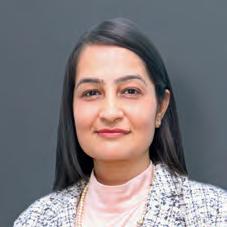
22
SANJAM GUPTA Director, Sitara Shipping
Photo: Sanjam Gupta
“There are 31 projects in the country with frast-tracked infrastructure developments”
No 1
Favorite app. Remember — Korean app that helps you organize business cards.
QUICK
No 6
Dream dinner date. Hwang Dong-hyuk, a Korean film director and screenwriter who created the 2021 Netflix drama Squid Game.

No 2
An item you cannot live without and why. My glasses: I am literally blind without them.
No 3
A subject you’d like to learn more about. Corporate finance.
No 4
A quality that impresses you in a business partner. Attentive listening.
No 5
If you could time travel, where would you go and what would you do. I would like to go back to nine years ago when my twin boys were eight months old and spend more time with them.
No 7
What superpower would you like to have. Flying.
No 8
Three things you take to a deserted island. Lighter, knife, my glasses.
No 9
What animal would you like to be for a day. Hawk.
No 10
Best advice ever received. Life is too short to have regrets.
23 THE QUICK 10 LEE EUNG-HYUK
LEE EUNG-HYUK Director of Marketing and International Affairs, Busan Port Authority
|
Images
Photo: Busan Port Authority
Graphics: Getty
Flying start
INES NASTALI
The region’s ice-free hub — that is one of the main selling points the Port of Klaip da promotes. The port, situated in the west of Lithuania, is the country’s only sea access and one of the busiest in the Baltic.
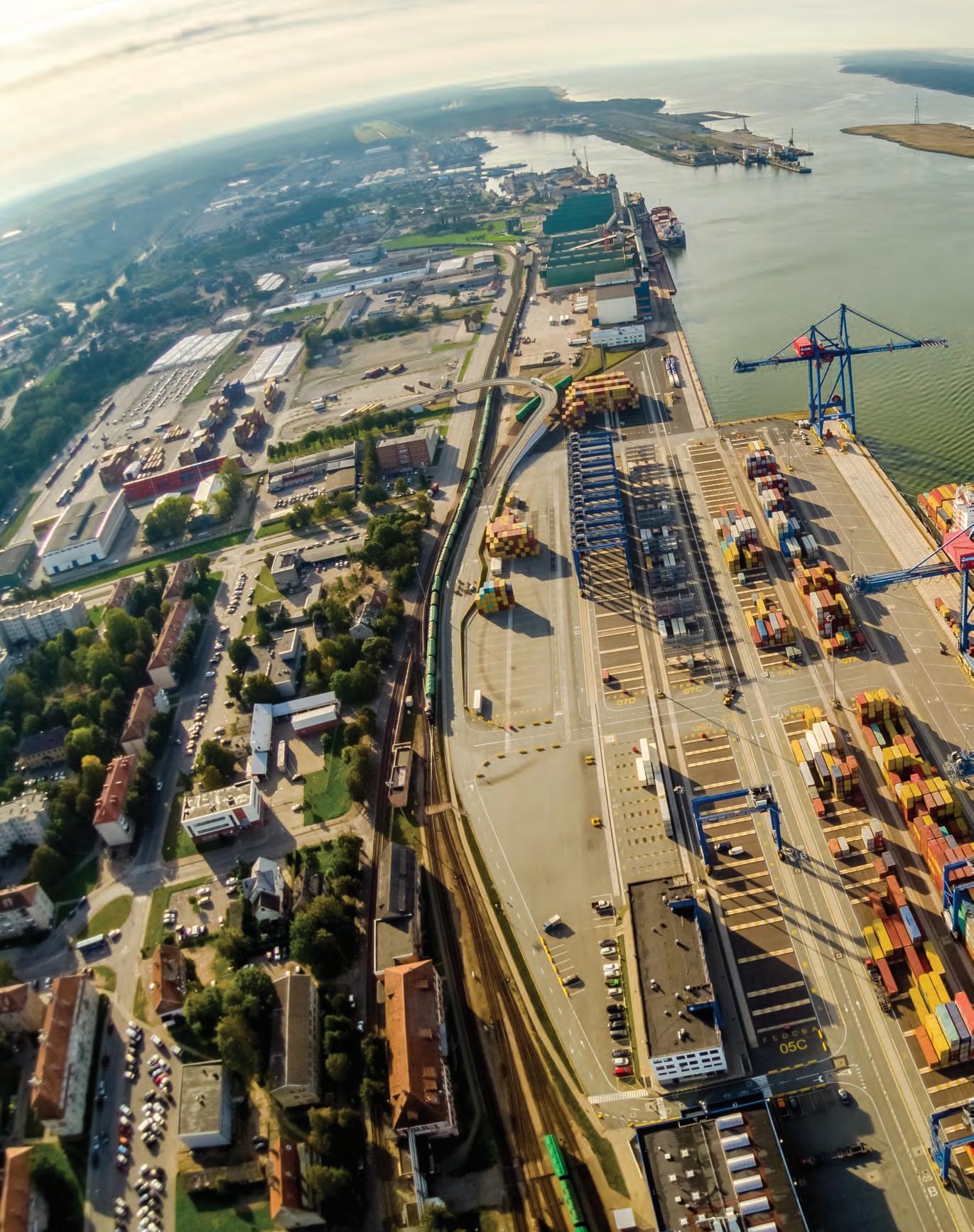
It is a multi-purpose port and offers bulk, container, and cruise service amid 33 terminals. In addition, it offers LNG bunkering for equipped vessels.
The port mainly trades with others throughout Scandinavia and Europe via maritime routes but it also has connections via intermodal shuttle trains to the east toward Kazakhstan, mainland China, Ukraine, Romania, Bulgaria, and Turkey. The latter has been suspended since the Russian invasion of Ukraine, however.
It has plans to become the maritime capital of the Baltics — with a clear focus on doing business with the west.
Pictured: The port of Klaip da in Lithuania.
Photo: Klaip da State Seaport Authority
PROJECT FOCUS MARITIME LITHUANIA
Several low-emission energy projects — from wind farms to urban transport — see Lithuania emerge as an up-and-coming Baltic maritime power hub
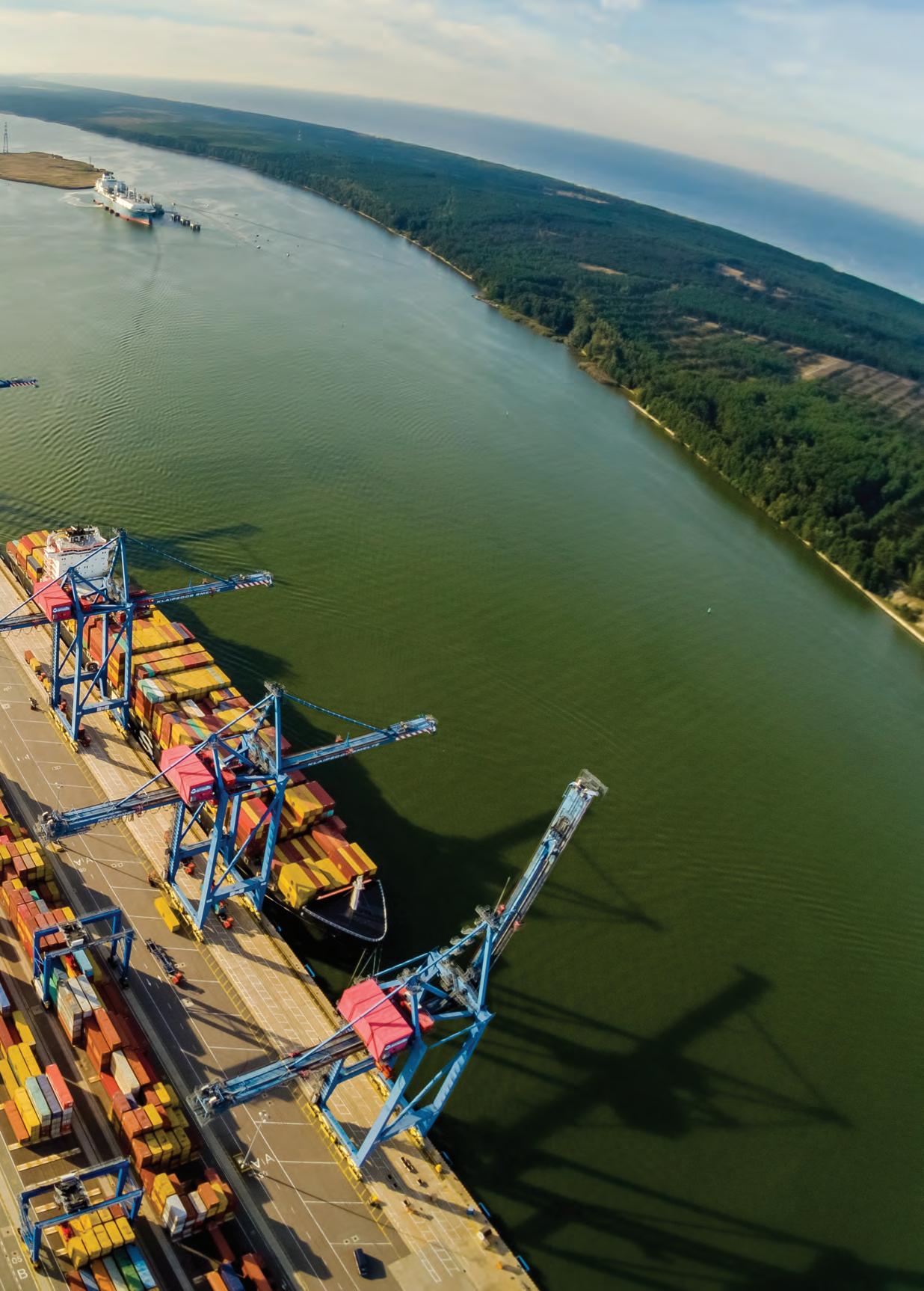
PROJECT FOCUS MARITIME LITHUANIA 25
Planned offshore windfarm
LATVIA
Baltic Sea
LITHUANIA
(Klasco) signed an investment agreement to set up the port infrastructure required for the development of offshore wind farms. The port of Klaip da is expected to become a crucial platform for the resources needed for the planned 700MW windfarm close to the port in the Baltic Sea. The project could see investment of EUR1 billion to potentially cover 25% of the country’s entire power demand and is set to be operational by 2028. The tender process is set to take place early this year.
Under the agreement, the port authority plans to provide the infrastructure on the Smelte peninsula, opposite the port, for production, assembly, or storage for offshore wind power plants, and components and receive transshipment traffic for the offshore windfarm industry.
Kaunas
RUSSIA
POLAND
Main port Planned offshore windfarm City International boundary
Source: S&P Global
BELARUS
© 2023 S&P Global. All rights reserved. Provided “as is”, without any warranty. This map is not to be reproduced or disseminated and is not to be used nor cited as evidence in connection with any territorial claim. S&P Global is impartial and not an authority on international boundaries which might be subject to unresolved claims by multiple jurisdictions.
To enable this, with the beginning of 2023, Klaip da State Seaport Authority changed its legal form from a state to a stock company. As a result, the port hopes for fewer financial and administrative restrictions, a reduced risk of political influence, and better commercial opportunities.
Kicking off the latter, in December 2022, The European Investment Bank (EIB) and Klaip da State Seaport Authority signed a EUR65-million-loan agreement to finance the rehabilitation, extension, and deepening of the port’s quay walls to facilitate access for larger vessels.
The biggest development projects include a new 100-ha container terminal — Klaip da is an MSC hub — with a port depth of 17 m.
For this, it planned to dredge the port entrance, with work to widen and dredge it scheduled for this year.
As part of the EIB’s new transport lending policy, decarbonization of ports as well as climate action and environmental sustainability get priority.
The lending portfolio therefore also includes money for the installation of offshore windfarm support infrastructure on the port site.
Windy business
The first steps to set this up were already made in 2022, when the port set out on its journey to enter the renewable energy market, and by that, opening up a sustainable business avenue for the port authority. In May 2022, Klaip da State Seaport Authority and Klaip da Sea Cargo Company
On the peninsula, the quays will be reconstructed to accommodate the loading and assembly of wind turbines. Around 20 ha of land will be used for these activities.
Klasco, for its part, undertakes to build the relevant superstructure for the project.
Knowing that setting up business in the renewables sector might take time to flourish, the Lithuanian government stepped in. “The government’s decision to reduce the port authority’s average annual return on investment in wind energy infrastructure to 2% allows this investment to be implemented without placing a significant burden on future wind energy generation developers,” said Algis Latakas, director general of Klaip da State Seaport Authority at the time of the announcement.
Seeking independence
The development of offshore wind production is also another arm of energy independence that the Lithuanian government is growing following the invasion of Ukraine by Russia and the subsequent cut-off of Russian gas.
Klaip da Nafta came into the spotlight in 2022 when Russia limited the delivery of gas to Europe and also because of the incoming trade sanctions. Although Russia was previously the main source for Lithuanian gas usage, now its sources are the United States and Norway.
The oil — nafta means oil in Lithuanian — and LNG terminal operator manages the Independence, the floating storage and regasification unit (FSRU) in the port of Klaip da, which has been covering Lithuania’s gas needs since 2014.
The company also exports to neighboring countries, something that became attractive to those seeking a new gas supply over the past year.
“The average utilization rate has risen from 20% in 2018, 37% in 2021, to 66% in 2022,” Rytis Val nas, chief administrative and corporate governance officer of Klaip da Nafta told P&H during a visit to the company’s headquarters as part of a press tour in late 2022.
The FSRU is therefore currently operating at its maximum capacity. To gain more control over the country’s gas supply, Klaip da Nafta will take over ownership of the FSRU from Hoegh LNG in 2024.
While the company is also looking into supplying alternative and sustainable fuels, first “energy needs need to be ensured,” said Val nas.“Affordability, reliability, sustainability — you can’t have all of them at once, so Europe will be battling reliability for the years to come,” he added.
Klaipda Smelte peninsula
Making connections
Not only the LNG terminal operator has seen a shift in business following the tumultuous economic situation the Russian invasion of Ukraine has caused. Local shipbuilder, BLRT Repair Yards, has noticed an increased order demand for LNG bunkering vessels since the outbreak of the war, Aldas Karinauskas, regional sales manager at the shipyard, told P&H during a stop of the same press tour.
With EU regulations on mandatory cold ironing services to be offered in union ports coming into effect in 2025, the shipyard also sees increased interest in cold-ironing conversions and retrofits for ferries, for example. “This is a very interesting market owing to the EU regulations coming in,” Karinauskas told P&H
The Klaip da State Seaport Authority itself is in the planning stages to provide onshore power, especially to ferries, ro-ro vessels, and cruise ships that transit the port to the UNESCO world heritage side of the Curanian Spit traveling dune, just opposite the port. “We’re seeking cooperation with energy suppliers to redeem the costs,” Kristina Gontier, international relations manager at the port authority, told P&H as the associated investment is expected to be about EUR3 million.
Building a maritime hub
Cooperation is also important to get things done in the industry and Klaip da’s maritime sector feels like a village full of maritime professionals working together. There are about 270 maritime companies in Klaip da alone, however, attracting new talent and research from outside the country is a core focus for Klaip da ID, the municipality’s maritime marketing agency.
The country is seeking talent from near and far, so as to rely on its own science and technology research cluster for any maritime innovation.
To ensure this, English is being spoken in the university and at companies. “We’re advancing the creative, tech, and services sectors,” said Kristina Postornak, talent project manager at Klaip da ID.
By 2030, the city wants to see EUR1.5 billion foreign direct investment and 40,000 more people living in the city taking on 25,000 new jobs.
The city sees its capital in the work-life balance it offers: with one-third of the city covered in nature, 100 km cycling routes along the seaside, 14 km of beaches, and sea activities, as well as financial incentives for professionals who move there.
All these plans are written down in the city’s blue economy plan. The plan also foresees — apart from the aforementioned offshore wind park and the LNG infrastructure — a Lithuanian hydrogen map plus investment in maritime technology research.
Knowledge exchange
Klaip da University is already working on the latter. To further develop sustainable transport in Lithuania, the EIB also
approved financing of electrically propelled vessels for river transport between Klaip da and Kaunas. The Lithuanian Inland Waterways Authority plans to replace truck transport with electric barges. The university is working on those electric pushers that will go to southeast Poland via inland waterways to reduce transshipment time from 400 km to 250 km by reducing truckloads by 10,000 journeys annually.
Another related project is the Popa boat — an electric catamaran developed in Klaip da, in collaboration with the Klaipda Science and Technology Park; the Agency for Science, Innovation, and Technology; and other partners that will see the addition of commuting catamarans on the Dane River added to the city’s public transport offerings.
But also, knowledge transfer ranks high on the university’s agenda. “We try to connect the university and companies via an investor spotlight to ensure that students stay local after graduation,” said Dr Darius Daunys, vice rector for research and innovation at the university.
“Ports, for example, generate a lot of knowledge around operations and trade. They are technology absorbers that have know-how from operations that they often don’t use,” Daunys added. A potential fountain of knowledge for the university.
That said, Daunys is not sure why this exchange does not happen. “It could be to keep a competitive advantage to not share information or it might be that ports do not consider taking their knowledge back to the technology providers.”
That said, another partner of the port, AD REM, the local logistics company situated in the free economic zone (FEZ) in the city and the port authority do exchange feedback on data sharing and trade facilitation. With the port authority having a port community system in place, AD REM LEZ CEO Tomas Rauckis uses the data-sharing platform for customs data between the different stakeholders.
“Data exchange used to be a problem and the port authority acted,” he told P&H, adding that there could be a better service in terms of visibility into the platform of the port — something to work on in future.
Another example where the maritime community of Klaip -da comes together — completing the trinity of electric transportation in the city — is via the Dancer bus. The company behind it is also situated in the FEZ and all research work on it has been done with the university. The outcome of this collaboration is a zero-emission urban transport solution that has seen two electric buses join the public transport fleet in 2019 with an expansion of a larger scale production starting in 2023.
“The Dancer bus combines Lithuanian talent with the latest global trend and innovation. It is based on R&D and engineering, solves a real problem, has a tremendous export potential, and a slick design,” said Eimantas Kiudulas, the CEO of Klaip da’s FEZ.
It is more proof that Klaip da has set itself up to become a Baltic maritime power hub.
27 PROJECT FOCUS MARITIME LITHUANIA
"It could be to keep a competitive advantage to not share information or it might be that ports do not consider taking their knowledge back to the technology providers"
DR DARIUS DAUNYS Vice rector for research, Klaip da University
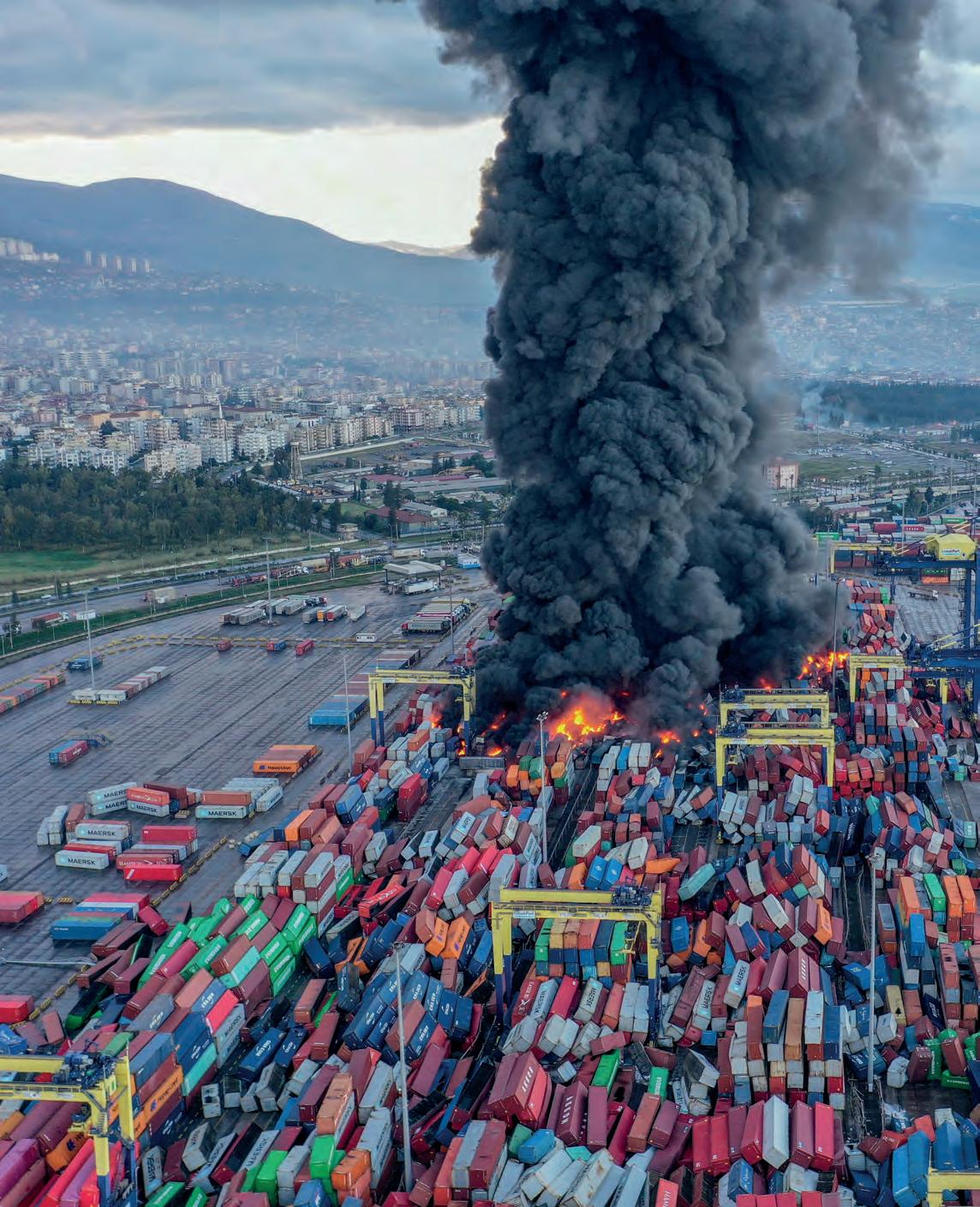
28 LOOKOUT PORT OF ISKENDERUN
LOOKOUT PORT OF ISKENDERUN
Shaky foundations
F
ollowing the devastating earthquakes in Türkiye and Syria in early February that have killed at least 40,000 people, at the time of writing, and also damaged the Port of Iskenderun, port operator Limak Port announced that the port will reopen within three months.
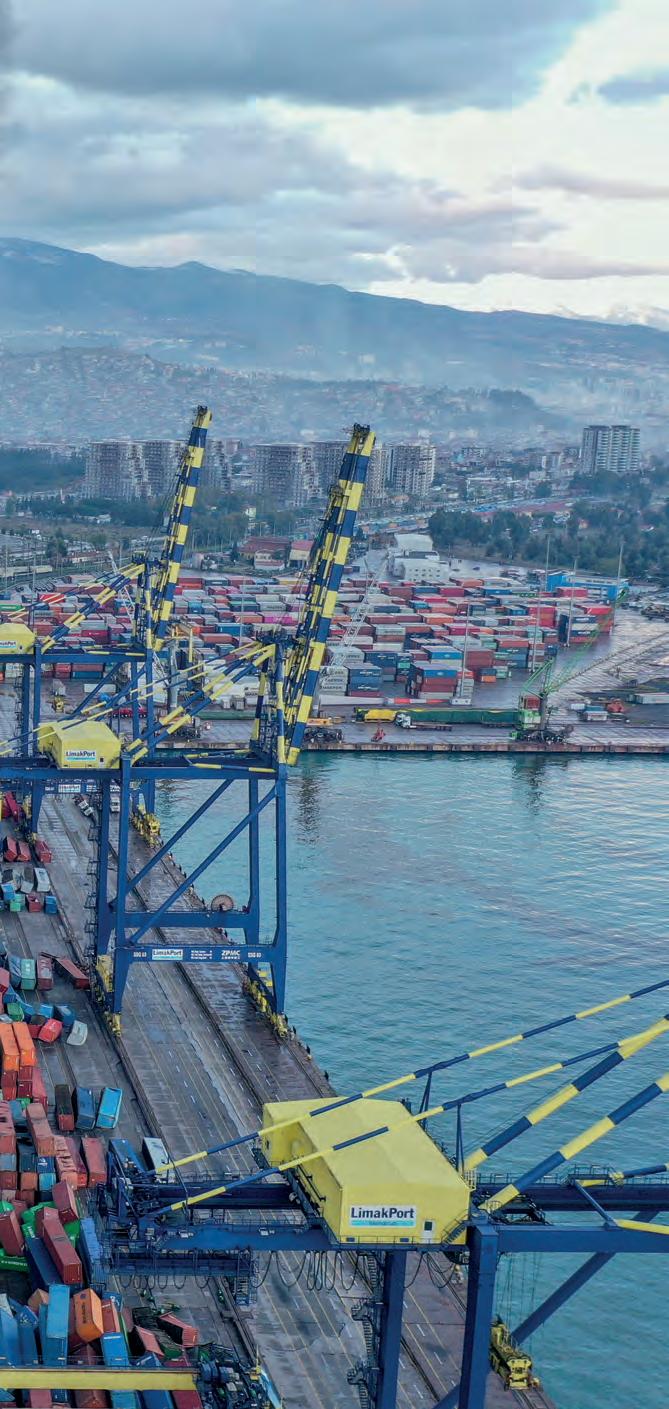
Limak Port further said there was no structural damage to the port, which is currently being used for civil evacuations and aid material deliveries.
The earthquake caused a fire in the container storage area of the port, located in the south of the country and one of the biggest in the area. The cause of the fire, which saw a fifth of the stored containers, including cargo, burnt out, is still being investigated
Toppled-over containers added to the difficult emergency response from the port side, which was consequently done mostly via air.
Following the incident, Maersk and Hapag Lloyd have announced a diversion of cargo to the Ports of Mersin, Türkiye, and Port Said, Egypt.
The incident is another stark reminder that both shipping lines and ports need to know what type of cargo is in container boxes to ensure that hazardous cargo can be separated easily in emergency situations.
To date, there is still too much uncertainty around the stowage and content of cargo boxes.
“There were significant lessons coming from the sad incident on MSC Flaminia, particularly from the subsequent legal proceedings that adjudged the shipper and the non-vessel operating common carrier responsible for root cause errors,” said TT Club’s Peregrine Storrs-Fox in a recent TT Club news article calling for increased vigilance around container fires, arguing that regulation and improving fire-fighting techniques have proven inadequate.
“Despite the biennial updates to the IMDG Code, including multiple arising from this particular incident, the judge’s assessment that the regulations merely set the baseline for good practice remains utterly true today.”
Pictured: An aerial view of fire in the containers that overturned at Iskenderun Port following 7.7 and 7.6 magnitude earthquakes that hit Türkiye and Syria in early February.
Photo: Murat Sengul/Anadolu Agency via Getty Images
PERSPECTIVE NUCLEAR PROPULSION
The new nuclear for maritime
To solve one of tomorrow’s challenges in the shipping industry, we must change the way we think of our energy use. Shipping is the most competitive industry we know, and for a long time, we have been on a race toward zero emissions and margins. Nuclear, for a long time, has been delivering sustainable emission-free energy but has suffered unfairly in the court of public opinion.
The global push for a green energy transition and an environmentally sustainable ocean transportation sector will come down to the matters of energy density efficiency. Simply put, the more fuel we use, the more waste we produce and conversely, the less fuel we use, the less waste we produce.
Our current low-sulfur IFO380 contains an average of 41 MJ/kg, which equates to just over 11 MWh/metric ton of fuel consumed. Shipping is focused on synthetic fuels made from green hydrogen that contains less than half the energy of bunker fuel, while green methanol contains just 20
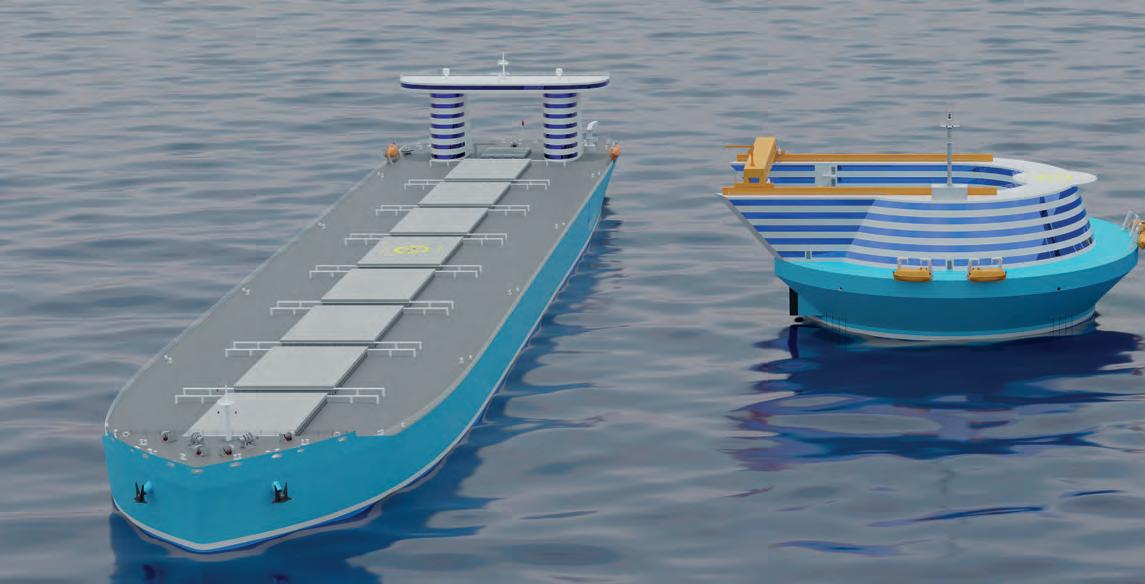
MJ/kg and green ammonia slightly less. Our industry’s transition to this end of the energy spectrum will result in a 100% increase of our fuel consumption and a corresponding increase in waste and emissions footprint.
Nuclear fuel from uranium, which has been safely and efficiently used in power generation and nuclear navies since the 1950s, contains 80 million MJ/kg, the equivalent of 22 million MWh/metric ton of fuel. That is roughly four million times more energy per metric ton of fuel than the proposed alternatives.
Less in, less out
Physics tells us that the quantity of fuel and fuel efficiency guide the quantity of waste we produce. Unused carbon in the exhaust from the burning of bunker fuel mixes with oxygen in the air and creates approximately 3.2 metric tons of CO2 per ton of bunkers consumed; that is how shipping contributes 2.5% of the 50 billion metric tons of global CO2 emissions every year.
LNG and green methanol would improve on this, while in green ammonia, the pilot fuel required would be the only source of CO2. With nuclear fuel, since we use so infinitely little of it, we produce only negligible quantities of waste. If we are to produce a smaller quantity of waste and emissions, we must use a smaller quantity of fuel. Not less fuel by going slower, but less of a better fuel so we can go faster.
New nuclear can be the game changer
Unlike naval nuclear reactors that require frequent refueling and are designed with pressurized systems that require a large evacuation zone in the event of an accident or emergency, new nuclear technology is unpressurised, which means the evacuation zone can be reduced to the boundary of the ship. Operator liability would go from being a public liability to one covered by marine insurance.
We can use low enriched fuels that are acceptable for civilian use.
In fast molten salt reactors (MSR), fuel is so efficient that they do not need replacing for 30 years. The extreme fuel efficiency and the small quantity of fuel combined produce very little waste.
High residual value of new nuclear energy
Since we went from sail to steam in the 1860s, shipping has poured over 1,000 billion metric tons of fossil fuels through our engines and released over 3 trillion metric tons of exhaust gases into the atmosphere.

If you calculate from well-to-wake, fossil fuels have a residual value. This is where the fast MSR is a real disruptor because of the positive residual value of the fuel. Instead of stopping the reactors at refueling intervals to remove spent and load fresh fuel, the fast MSR, which runs on a liquid nuclear fuel, is topped up at full power.
The ship does not have to berth or stop mid-journey. The emissions and the little residual waste are equivalent to the amount being topped up, which we extract from the core and store inside the reactor island in a safe and secure environment. Consequently, the tank is always full and what goes into the
reactor on day one will still be there, intact, on the last day.
A new understanding of nuclear
A little knowledge goes a very long way to understand how new nuclear for maritime can provide the future we all want. To demonstrate the viability of new nuclear in maritime, we will need evidence of safety functions and systems so that we can always ensure safe and secure operations even when a marine accident occurs. Nuclear is the safest energy source we have in the world today despite widespread popular belief. Radiation limits by international organizations are set so low, they are akin to having a motorway speed limit of just 1 mile per hour. Nuclear is the only reliable zero-emission energy source we have.
The finest minds and smartest people in the world are actively engaged in technology advancements that make this new generation of new nuclear machines fit for our purpose.
ABOUT THE AUTHOR
MIKAL BØE is the founder and CEO of Core Power, a UKbased development company specializing in scalable atomic power technology. In partnership with leading international corporations, Core Power aims to deliver durable zero-emission energy for floating industrial production and deep-sea shipping.

Pivotal role of ports
The role of ports in this energy transition is also essential in many ways as they provide the primary link for local communities between the sea and the land and can play a pivotal role in paving the way for nuclear-powered ships to berth at their terminals. Winning over public opinion and that of local and national governments would need ports to embrace new nuclear both on board ships and as an energy source to produce synthetic fuels for smaller vessels.
With a large emergency planning zone (EPZ), the operator of the vessel would be responsible for evacuation and clean-up of the area in a port — or a whole port city — in case of an accident. With a small, contained EPZ, that liability would not extend beyond the railings of the ship and could be covered by marine insurance.
Floating new nuclear power generation platforms located off the coast can provide clean emission-free energy to power port communities and provide the enormous amount of energy required to make green hydrogen, ammonia, and methanol. The port’s traditional and natural role as a bunker hub could be secured into the future if they can transition to providing the next generation of sustainable clean fuels to shipping lines. New nuclear can be the transformative energy source that enables ports to fulfill that role.
PERSPECTIVE NUCLEAR PROPULSION 31
Pictured: Core Power’s rendering of nuclear powered merchant vessels.
“Shipping has released over 3 trillion metric tons of exhaust gases into the atmosphere”
| M ikal Boe
MIKAL BØE CEO, CORE POWER
Photos left to right: Core Power
IN COURT SANCTIONS
While a new round of sanctions against Russia bring a bit of clarity into the unknowns of handling associated cargo, there are questions left to be answered for port services
Mapping out applicable sanctions
n the sanctions world, the broad sanctions imposed on Russia following its war in Ukraine have perhaps had the most dramatic impact to date, partly because Russia, and its nationals, had significant stakes in key industries such as oil and gas, agricultural commodities, and shipping. Sanctions targeting Russia include trading bans for many goods and services, restrictions on vessels, ports and terminals, and an ever-increasing list of persons subject to asset freezes and travel bans.
There are also subtle differences in the various sanctions’ regimes, such as variations of the definition of control between the US, European Union, and UK — the UK being the most nebulous. This is problematic within shipping, which is a complex and international market. It is often necessary to screen numerous entities and/or individuals within a short time frame. This can be challenging owing to convoluted corporate structures and special purpose entities registered in low transparency jurisdictions. In the ports and terminals context, the physical location of the business is necessarily fixed, but the applicable sanctions regimes can vary by reference to less tangible factors.
The first step in designing a robust compliance program is to understand which sanctions apply. Generally, there must be
a sufficient nexus between the prohibited conduct and the country imposing the sanctions. Sanctions will usually apply to acts of any person within the sanctioning country, worldwide on individuals, companies, and vessels, which are connected to the sanctioning country.
However, the nexus can be more tenuous than expected due to nuances. For example, the US notably uses secondary sanctions, which effectively have extra-territorial application, and a nexus may arise in any US dollar transaction. Similarly, the EU Russian sanctions can apply “in respect of any business done in whole or in part within the Union”.
In principle, any involvement of EU companies or nationals in a transaction could trigger EU jurisdiction. Another example is that UK sanctions can apply to British Overseas Territories, including Bermuda, Cayman Islands, and Gibraltar. Gibraltar additionally applies EU sanctions. These are all locations in which it is common to find SPVs associated with international shipping and trade.
International markets such as shipping, commonly see nationals of many countries working together in one company. A high-profile example of how the nexus issue can create difficulties in practice for ports can be seen in the case of Roman Abramovich’s voyage from Spain to Bodrum Cruise Port in Turkey.
This was with a view to avoiding seizure of his superyacht Solaris, having become the target of an EU and UK asset freeze. The port is part of the Global Ports Holding Group (GPHG), which has headquarters in London. UK sanctions therefore apply to GPHG, but reportedly GPHG had very limited ability to manage port calls, if any. After escaping across the length of Mediterranean, the Solaris appeared to be at risk of being subject to an asset freeze after all, and GPHG’s position was at risk of violating UK sanctions. Ultimately, the yacht was forced to move to an alternative port, and GPHG was unable to accept payment for any services already rendered.
The lesson here is that when it comes to mapping out applicable sanctions you need much more than just a map.
Despite losing out on fees, GPHG may consider itself lucky that it did not have to actually deal with an asset freeze.
As ports all over Europe have experienced, whether for superyachts or commercial cargo, being responsible for freezing a deteriorating asset is not comparable to a financial institution freezing a bank account. Returning frozen assets to the owner may be prohibited but maintaining the asset may also be a breach — by conferring an economic benefit on the owner. Equally, it is not straightforward to abandon or destroy the asset. These types of cases turn on their particular facts and the relevant sanctions regime and require specialist advice. The best policy is to minimize the risk of having to deal with such situations altogether.
1
ELEANOR MIDWINTER | Partner Wikborg Rein
Returning frozen assets to the owner may be prohibited CASE
Sanctions
The impact of the oil price cap on port services
The oil price cap introduced by the G7 and coalition partners to limit trading of Russian oil has been the subject of wide reporting. It is reasonably well-aligned between the relevant jurisdictions and issued together with useful official guidance. The intention was that the market had confidence in the rules, so that compliant oil could keep flowing to third countries. Broadly speaking that aim has been achieved. However, there is some nuance to consider, some of which may be particularly relevant to ports and terminals.
The Price Cap measures imposed by the EU, the UK, and the US are broadly similar and straightforward. They prohibit maritime transportation to third countries of Russian origin crude oil from 5 December 2022 and petroleum products from 5 February 2023, together with “associated services.” Those prohibitions do not apply if the crude oil or petroleum products are bought below the Price Cap, with the service providers being obligated to collect and keep proof of the price level.
cial services or providing funds connected to the transport of Russian oil.
For ports and terminals, the EU rules may present an issue. Prohibited services include technical assistance, but what this means in context is ambiguous and the definition does not assist. There is a specific exception for pilot services “necessary for reasons of maritime safety”.
However,
a question remains as to which associated services are caught by the bans.
The US is the clearest, in scope are trading/commodities brokering; financing; shipping; insurance, including reinsurance and protection and indemnity; flagging and customs brokering. There is also an Office of Foreign Assets Control hotline for queries.
The UK scope is similar, apart from not including flagging as clarified on 4 February 2023, and prohibits brokering services, finan-
The EU FAQs also clarify that vessel or cargo testing, inspection and certification services and bunkering services are out of scope. These factors suggest that other port services may well be in scope and it was recently reported that Spanish authorities warned suppliers of equipment for ship-to-ship operations off Ceuta that they might be at risk of breaching sanctions. This leaves a lacuna around services such as towage, mooring assistance or even berthing. It is not clear whether these were simply not considered, or if the prohibition applies. It is hoped that any uncertainties will be of relatively limited significance, since the Price Cap was introduced with the same timeline as EU/UK import bans. This means that vessels carrying Russian oil should not call at ports and terminals in the EU in any event. However, there are other ways to establish nexus (as mentioned in the case study).
Pending further clarification from the EU Commission, ports and terminals with an EU connection or EU employees should exercise caution in respect of any services provided to vessels carrying Russian oil.
33 IN COURT SANCTIONS
ELEANOR MIDWINTER | Partner Wikborg Rein
"This leaves a lacuna around port services. It is not clear whether these were simply not considered, or if the prohibition applies”
EXPERT
Lateral thinking
Without lateral thinking and — it must be said — a born business gambler’s instinct that he was right, US businessman Malcom McLean would never have championed containerization and the maritime world might never have made the paradigm shift that has led to globalization
 TONY SLINN
TONY SLINN
Malcolm McLean’s theory was that the storage vessel itself needed to be transportable, not the goods within it. True, the idea of containerization can be dated to the 18th century when James Brindley designed the ”starvationer” ship with 10 pods to transport coal in England, followed by fellow Englishman Benjamin Outram’s horse-drawn boxes that took coal along rails from mines to canals, where they were transferred onto barges.
However, McLean went much further than that, with the result that products stuffed inside containers make up about 60% of global maritime trade, worth around US$14 trillion. The rest is mainly bulk commodities such as oil or grain.
Why was containerization a paradigm shift? Because the concept of moving goods in crates, boxes, sacks, barrels, and amphorae had not changed much for thousands of years. Even in the early 20th century, as trade grew more sophisticated and rail became a prime cargo mover on land, the process of loading and unloading as goods were transferred from one method of transportation to another remained very labor-intensive, time-consuming, and costly.
This break-bulk process needed large gangs of longshoremen, as they were known in the US, or stevedores elsewhere — appropriately meaning “a man who stuffs” in original Spanish. Different-sized packages also meant ship’s cargo space could not be used effectively and also created weight and balance challenges. Goods were more likely to experience damage from handling or theft too.
Pictured: Ship at a dock in the port of Newark, New Jersey, in the 1970s.
Photo: Hum Images/Alamy Stock Photo
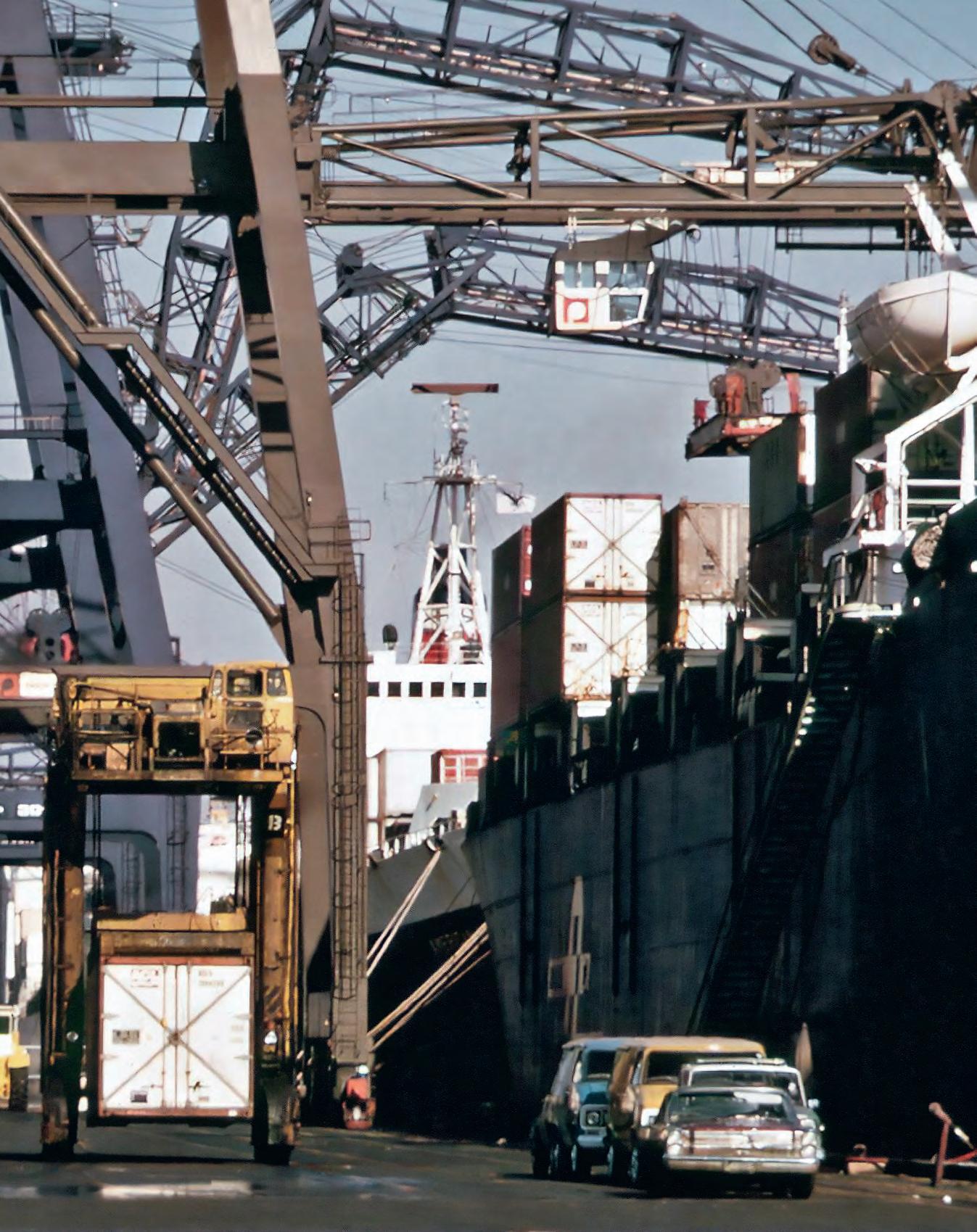
35 VIEW FROM ASTERN CONTAINERIZATION
The huge cargoes that trains were able to carry slowed down transfers even more — some ships spent more time in port than at sea as a result. It took World War II and the military in the US and Australia for the first inkling to come about that the global impact containerization would have: guns, bombs, and other martial materials were shipped to troops in boxes of a standard size, but yet, we were still a decade away from containerization as we now know it.
The father of containers
Hailed as the father and inventor of the shipping container, self-made multimillionaire Malcom Purcell McLean was born in Maxton, North Carolina, in 1913. His parents could not afford to send him to college, but filling cars with petrol at a local garage earned him enough to buy a secondhand truck. In 1935, along with his sister and brother, Clara and Jim, McLean founded the McLean Trucking Co.
His seminal moment came in 1937, he recalled, while delivering cotton bales to New Jersey and being forced to wait hours to unload his truck’s trailer.
“I had to wait most of the day to deliver the bales, sitting there in my truck, watching stevedores load other cargo. It struck me that I was looking at a lot of wasted time and money. I watched them take each crate off the trailer and slip it into a sling, which would then lift the crate into the hold of the ship. Why not take just the trailer, free of its wheels and free to be lifted unencumbered? And not just one trailer, nor two of them, nor five, nor a dozen, but hundreds — on one ship!”
It took until 1952 for McLean to begin to turn his dreams into reality, and by then, McLean Trucking was a huge company worth millions of dollars. He started designing the world’s first shipping container, realizing it needed to be built of tough steel to withstand rough seas and protect its contents. It could not have permanent wheels and would need to be capable of stacking. McLean patented a steel-reinforced corner post that both allowed it to be gripped for loading and provided the strength needed for stacking.
He worked with engineer Keith Tantlinger to turn his design into reality. Perhaps a relatively unsung hero of containerization, Tantlinger would later work with the American Standards Association. His designs included the corner casting and Twistlock systems found on every intermodal container, the spreader bar for automatic securing of containers lifted on and off ships, and the ship-to-shore container transfer device for the first cellular container ship.
Committing to shipping
McLean then found himself stymied by US regulations that would not allow a trucking company to own a shipping line. After legal controversy, McLean finally sold his haulage company in 1956, buying the Alabama-based Pan Atlantic Tanker (PAT), which had shipping and docking rights in major eastern ports. He later renamed PAT as Sea-Land Service — a company that its current owner Maersk announced in January 2023 it will retire — and
set about converting his two WWII oil tankers into the world’s first container ships, betting everything on his concept. The first was SS Ideal X — informally dubbed SS Maxton after McLean’s hometown — and on its maiden voyage in April 1956, it carried 58 35-foot-long trailer vans — as containers were then called — from New Jersey to Texas. Contrast that with today’s biggest box ship, Evergreen’s 400 m-long Ever Alot launched in June 2022 is capable of carrying 24,000 TEU.
Port, rail, union, and government officials watched Ideal X ’s voyage closely. Asked what he thought about it, International Longshoremen’s Association official Freddy Fields stated, “I’d like to sink that son of a bitch.”
Prescient for the impact containerization would have on traditional jobs.
In 1956, longshoremen hand-loading a ship cost US$5.86 an imperial ton. Using containers, that came down to 16 cents a ton. Furthermore, of course, it took far less time to load a ship. McLean’s strategy was based on that, his oft-repeated maxim was “a ship earns money only when she’s at sea”.
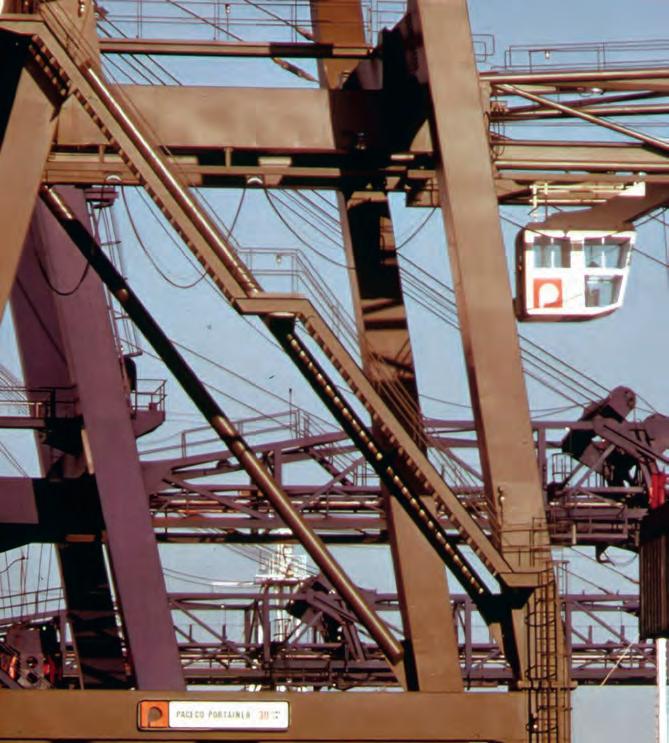
When SS Ideal X docked in Houston and had unloaded the containers onto trailers attached to non-McLean owned trucking fleets, their contents were inspected. They were dry, secure, and intact. Tick box one.
However, McLean had many more hurdles to jump over. He needed to convince port authorities to redesign wharves to accommodate his containers and his new intermodal transport operation. His first big break came with backing from New York Port Authority, but older ports continued to resist change, not least because of labor unions.
Securing new clients, however, proved easier, since PAT offered a huge discount over conventional shipping — and eliminated several steps in the transport process. Additionally, as McLean’s containers were tough and secure, they also attracted lower insurance rates as they were safe from theft and damage. That was so rife back then that they were factored into shipping business costs.
The standard issue
McLean realized that standardization was vital and the path to overall industry growth. He made his patents available by issuing a royalty-free lease to the Industrial Organization for Standardization (ISO).
By 1968, the ISO had defined a standard container as being 20 ft long, 8 ft high, and 8 ft wide, a move that substantially broadened the possibilities for international intermodal transportation.
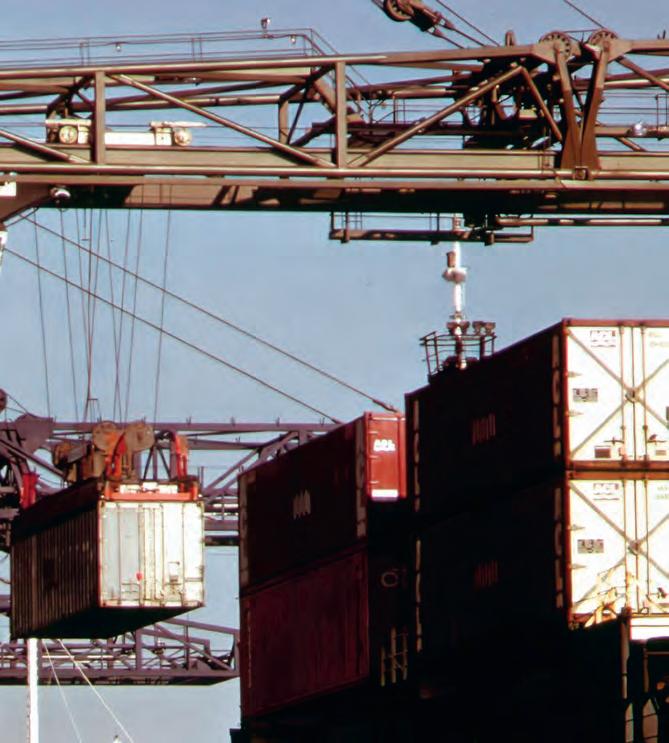
McLean, however, wasted no time. In April 1957, he bought and converted six C-2 Class bulk cargo ships into dedicated container carriers with slots. The first, Gateway City, is acknowledged as the first true container ship and began regular service between New York, Florida, and Texas. In 1960, with PAT now officially changed to Sea-Land Service, McLean’s operation was profitable, and he added routes and bought bigger ships. By 1963, he had opened a 40-ha container facility in Port Newark-Elizabeth and in 1966 Sea-Land commenced service between New York and Europe, calling at Rotterdam, Bremen, and Grangemouth in Scotland.
A huge boost came in 1967 when the US government contracted Sea-Land to start a container service to South Vietnam that was responsible for 40% of the company’s
revenue in 1968–69. That led to a US–East Asia service in late 1968, by which time container ships were capable of carrying 1,000 TEU. The service was subsequently expanded to Hong Kong and Taiwan in 1969, and to Singapore, Thailand, and the Philippines in 1971.
Nevertheless, overall container market development was still relatively slow during the 1960s. Steeped in tradition, many ports failed to buy container-specific cranes or build terminals, while unions continued to resist any change. However, a significant port breakthrough came in the late 1960s when Oakland became the first major port on the US West Coast to build dedicated container terminals, investing US$600,000. Oakland officials believed, rightly, that ”this new technology will revolutionize trade with Asia.”
Convincing the ports
Finally, other ports saw containers as the path of the future and by the end of the 1960s, Sea-Land was the world’s largest cargo-shipping business, boasting 27,000 containers, 36 box ships, and access to over 30 ports.
Sea-Land, however, needed cash to stay competitive and McLean turned to Reynolds Tobacco, a company he knew from his trucking days. In January 1969, Reynolds agreed to buy Sea-Land for US$530 million in cash and stock, with McLean personally making US$160 million and given a seat on the board.
Under Reynolds, Sea-Land’s profits were intermittent, despite over $1 billion invested in building huge terminals in New Jersey and Hong Kong, while adding to its container ship fleet. In 1975, Sea-Land’s earnings dropped sharply, and McLean subsequently relinquished his board seat and cut ties with the company.
He went on to run various other businesses, buying United States Lines (USL) in 1978 and building a fleet of 4,400 TEU ships, the largest afloat at the time. Designed during the 1970s oil shortages, the ships were fuel-efficient but slow and sadly unable to compete when oil prices dropped dramatically. USL was made bankrupt in 1986.
From being one of Forbes Magazine’s 400 Richest Americans, worth US$400 million, McLean followed suit a few years later, with a gamble that did not pay off, betting on rising oil prices — he owed a reported US$1.3 billion.
For his achievements, however, he was awarded numerous honors. Fortune inducted him into its Business Hall of Fame in 1982; in 1995, American Heritage named him one of the 10 outstanding innovators of the previous 40 years. In 2000, he received an honorary degree from the US Merchant Marine Academy, while the International Maritime Hall of Fame named him Man of the Century that same year.
He died of heart failure aged 87 on 25 May 2001 and on the morning of his funeral, container ships around the world blew their whistles in his honor.
Posthumously, McLean was inducted into the Logistics Hall of Fame in 2004 and the North Carolina Transportation Hall of Fame in 2006.
Perhaps, however, the Forbes magazine obituary best summed him up as “one of the few men who changed the world”.
37 VIEW FROM ASTERN CONTAINERIZATION
Photo: Hum Images/Alamy Stock
Photo
Membership notes
We are pleased to welcome as new regular and associate members of the association:
Regular members
New Mangalore Port Authority
India
+91 08 242 407 341 secrqtary@nmpt.gov.in www.newmangaloreport.gov.in
Venkata R. Akkaraju, chairman
Port Autonome de Pointe-Noire
Congo
+24 22 229 400 13 info@papn-cg.org
www.papn-cg.org/fr/accueil
Seraphin Bhalat, director general
Porto Sudeste do Brasil S.A
Brazil
+55 31 397 284 51 Bernardo.castello@portosudeste.com www.portosudeste.com
Jayme Nicolato, CEO
Associate members
Suez Canal Authority
Egypt
+20 10 910 886 92 planning@suezcanal.gov.eg www.suezcanal.gov.eg/English
Elsayecl AboELFotouhFarag, director, Planning & Research Dept.
Latest ESI scores published
As of January 2023, 6,727 vessels have been registered with the Environmental Ship Index (ESI). Compared with the last update from October 2022, fewer ships are now registered.
Most of the removed ships scored in the 20–30-point range. However, there are now more registered vessels in the higher-ranking ranges between 30 and even above 50.
The average ESI for ships now stands at 30.1 points.
In the below infographic, vessels scoring above 20 points have been visualized. With 4,768 vessels, this makes up the majority.
The ESI identifies seagoing ships that perform better in reducing air emissions than required by the current emission standards of the IMO. It evaluates the amount of nitrogen oxide and sulfur oxide that are released by a ship and includes a reporting scheme
on the greenhouse gas emissions.
All stakeholders in maritime transport can use the ESI to improve their environmental performance and reach sustainability goals.
ESI has become the standard tool used by the world’s ports to reward and incentivize shipowners meeting and exceeding IMO emissions standards.
Recently, the ports of Saint John in Canada and Koper in Slovenia have signed on to become incentive providers, bringing the total number of ports that offer ship performance-based port dues to 60.
Find out more about the incentive program on the dedicated ESI website or contact the Green Awards team, which works with the IAPH on the scheme.
environmentalshipindex.org
admin@environmentalshipindex.org
MARCH (13–17)
IMO Facilitation Committee 47 Trade data discussions in London
Imo.org
MARCH (20–24)
IMO Intersessional Working Group GHG
Debating maritime emissions
Imo.org
MARCH (20–22)
UNCTAD TrainForTrade Conference and Port Endeavor
Taking place in Buenos Aires
www.tft.unctad.org
IAPH INFO
Ensure the graph remains updateable Don’t convert it to outlines, Please! Note: Stacked bars show ESI scores above 20 points, single bar shows ESI score below 20 points Source: IAPH | © 2023 by S&P Global Market Intelligence ESI scores: 1 January 2023 > 20–30 > 30–40 > 40–50 > 50 < 20 Number of ships SHIPS IPs 0 1,000 2,000 3,000 4,000 5,000 6,000 7,000 Apr 2021 Jul 2021 Oct 2021 Jan 2022 Apr 2022 Jul 2022 Oct 2022 Jan 2023 6,890 6,875 6,9336,908 6,890 6,981 6,896 6,727 56 59 60 61 62 59 58 60 13 20 20
EVENTS TIMELINE 2023
Q: Please introduce yourself and your role and focus within the IAPH cruise committee.
A: My name is Simone Maraschi and I am the managing director of Cruise Gate Hamburg and chair of the IAPH cruise committee.
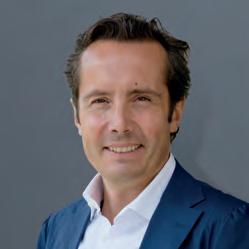
Q: What work is the cruise committee focusing on overall?
A: The role of the cruise committee is to support member ports by providing information and data. The committee facilitates and encourages communication, exchange of information, and interaction with other external industry associations, such as Cruise Line International Association (CLIA). For example, at the last cruise committee meeting, a cruise line and an onshore power supply (OPS) technology service provider were invited to present the latest developments in sustainable technologies. The cruise committee’s activities have recently restarted after a long break owing to the pandemic. At the moment, we are working on setting up an OPS cruise platform. This involves the creation of a database with data from member ports and then a dialogue with the CLIA to get an overview of the situation among the world’s cruise ship fleet.
Q: What challenges and opportunities does the cruise industry face in 2023?
A: During the pandemic, the sector showed enormous resilience and adaptability, managing to operate safely even under the most difficult conditions. In 2022, the sector recovered and ended the season with very positive numbers. For 2023, the cruise lines have already announced very high booking volumes. I would therefore say that the conditions for a successful year are all present. Nevertheless, with the ongoing conflict in Ukraine, the industry will have to remain vigilant and, above all, flexible.
On the sustainability front, the industry has played a key role in the research and development of new sustainable technologies for years. This commitment will continue even stronger. The industry has a clear goal: to get ahead of the IMO target — net zero by 2050 — and reduce emissions to zero by 2040. AIDA Cruises, for instance, is aiming for a climate-neutral fleet as early as 2040.
Q: What kind of collaboration would you like to see within the IAPH and between the different committees?
A: The engagement of the IAPH covers the port and shipping sector across the board, and this is clearly reflected in the different committees. Many issues and challenges unite us and require a joint effort. In this respect, collaboration between committees is crucial. Projects such as the Environmental Ship Index, the application of green corridors, the ongoing work of IAPH on the maritime single-window concept, and the World Port Tracker are clear examples of how projects interact across committees.
Q: Who do you invite to join the IAPH cruise committee?
A: At the moment, the committee consists of about 40 ports, and I would be very pleased to see this number grow, even with ports that are not active in the cruise sector. The plurality of information and experience enriches us, and therefore an active and committed committee enhances the experience and gives value to the work of the committee and its members.
39 IAPH INFO SIMONE MARASCHI
27 3 31
Managing director, Cruise Gate Hamburg
Photo: Catrin-Anja Eichinger
(27–31) IMO Legal Committee 110 Maritime legal considerations under scrutiny Imo.org
(3–7) IMO Marine Environment Protection Committee 80 Decisions on maritime emission reduction Imo.org
(31–2)
2023 World Ports Conference
IAPH flagship conference in Abu Dhabi Worldportsconference.com
Simone Maraschi became the chair of the IAPH cruise committee in 2022. Ports & Harbors caught up with him to talk plans and challenges of the industry
MARCH
JULY
OCTOBER–NOVEMBER
IAPH
The
BOOK AUTHOR
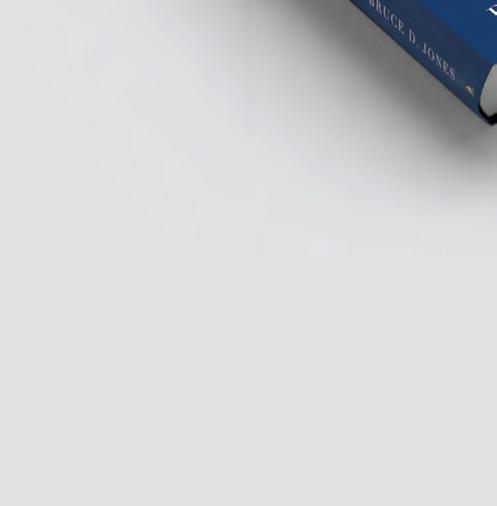
BRUCE JONES directs the Project on International Order and Strategy of the Foreign Policy at the Brookings Institution, where for four years he was also vice president for foreign policy.
THE REVIEW




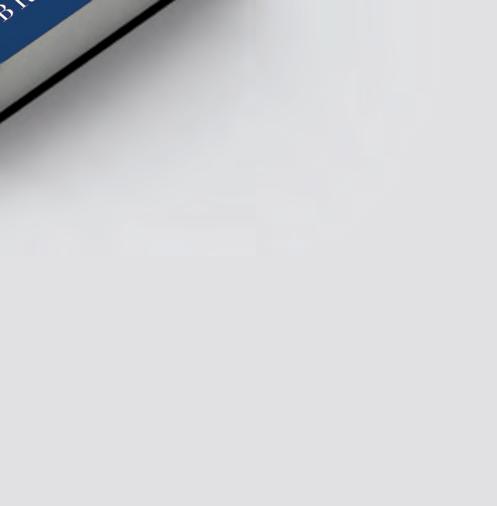

To Rule the Waves
MARK SZAKONYI
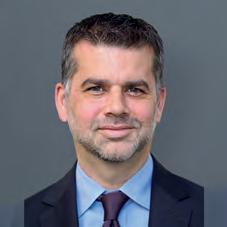
Rarely does a book on shipping appealing to a wider readership seem so timely as To Rule the Waves. Amid escalating tensions between mainland China and the United States, Bruce Jones’ book charts a sweeping history of how the great and late great powers protected and flexed their power through trade — and sometimes via the end of a gunboat barrel.
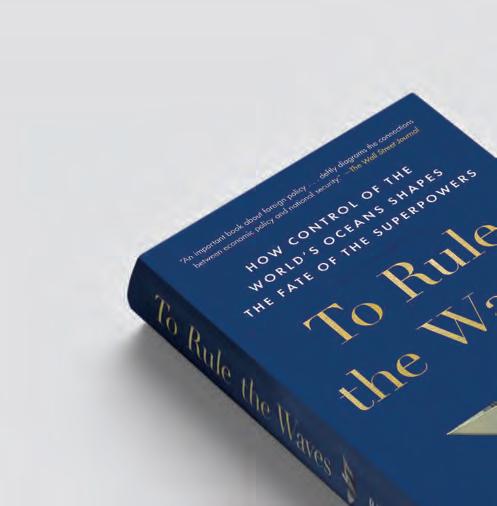
In sending squadrons to blockade the port of Piraeus in 1850, Secretary Lord Palmerston “will always be associated with gunboat diplomacy — a phrase that captured the somewhat ironic notion of using naval force to achieve better terms in negotiation over ‘free’ trade,” writes, Jones, a Brookings Institution geopolitical expert.
Now, those guns are being pointed across the trans-Pacific, creating the potential for scenarios that years ago would seem fanciful, such as a blockade of Taiwan. Geopolitical flashpoints seem to be increasingly
encroaching in the commercial shipping world. There is the escalating US-China war impacting soybean exports to critical semiconductor inputs.
More alarming is the drumbeat of announcements of new military training exercises in Asia among allies against fictional foes that closely resemble China or United States and its western and Asian allies. It is the escalating tit-for-tat that worries Jones.
He draws parallels to the naval fleet contest between the United Kingdom and Germany, and the current US-China dynamics, giving readers a more modern case of the Thucydides’ Trap. The Crowe memorandum, as authored by UK diplomat Sir Eyre Crowe, warned that Germany’s expanding navy and commercial influence could be a risk, sparking off a naval arm’s race that helped drive the two countries and the rest of the continent into the First World War.
Jones warns of the growing scramble among global powers to dig out what
lies under the water — whether it is oil or minerals critical to renewable energy manufacturing.
The varying impact of climate change, from coastal flooding to food scarcities, has only begun to test the world.
Geopolitical powers, often more sheltered from climate change impact than developing countries, face a choice in whether to focus on fortifying those at the center of the building climate change storm or their own coastlines.
Taking readers to the once top-secret underground military base near Tromsø on the Arctic Circle and then off the deck of the Madrid Maersk, Jones spins an engaging tale informed by his travels and clear enthusiasm for a world invisible to most.
There are few minor errors that those immersed in container shipping will spot, but readers ultimately gain a deeper understanding of the power and history shaping current events.
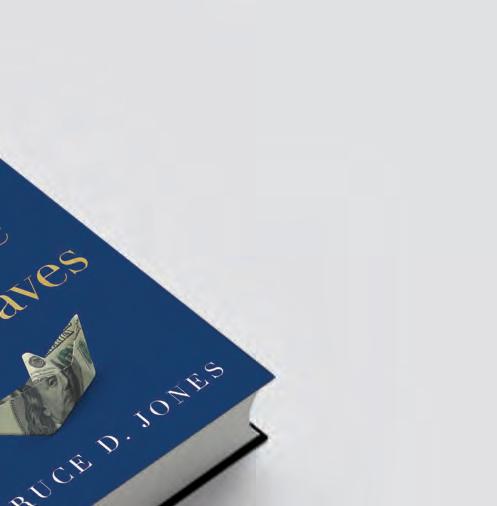
40
Image: Simon and Schuster
| Photo: Bruce Jones
Maritime Intelligence Risk Suite
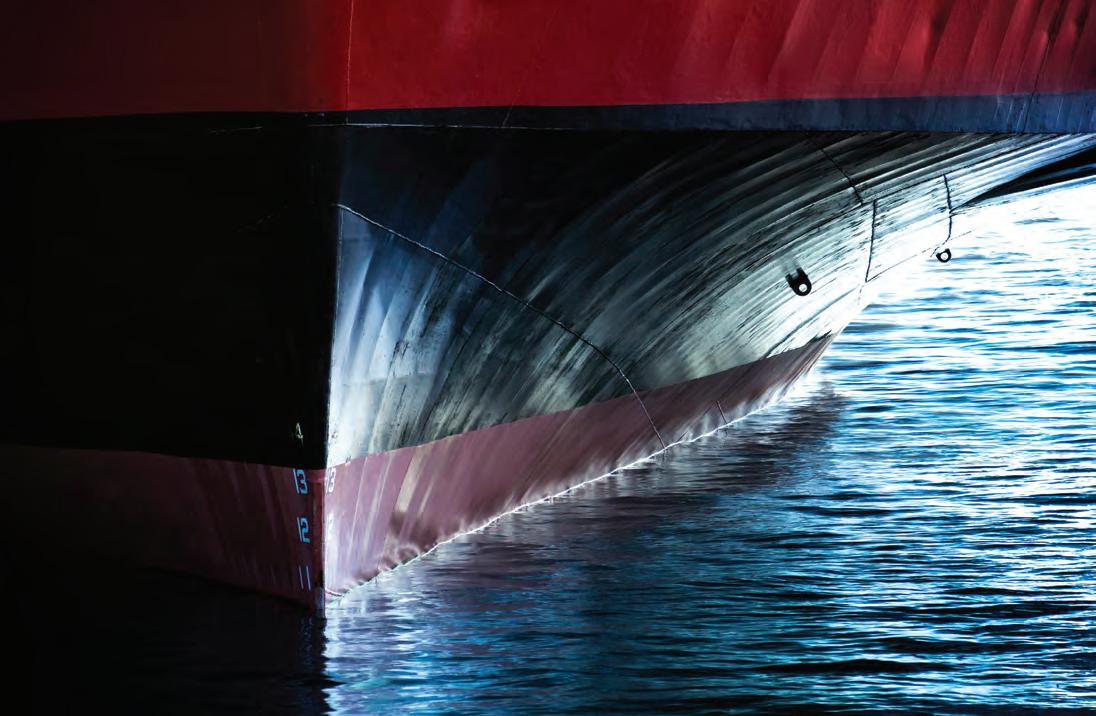
Minimising exposure to risk and maximising your operational efficiency requires reliable and accurate in-depth knowledge and insight. Whether your risk relates to operations, monitoring and surveillance, piracy, war or other risks that could potentially impact your business, Maritime Intelligence Risk Suite provides the insight you need to give your business a competitive advantage.
To find out more visit ihsmarkit.com/MIRS
Why sponsor?
Sponsorship of the IAPH World Ports Conference places your company in a position of authority and enables you to build and strengthen your relationships and increase visibility to global stakeholders including shipowners, ports, logistics providers, local communities, regulators, equipment providers and related third parties.
A world-class, in-person event in Abu Dhabi bringing together leading port stakeholders for learning, information sharing, networking and collaboration.
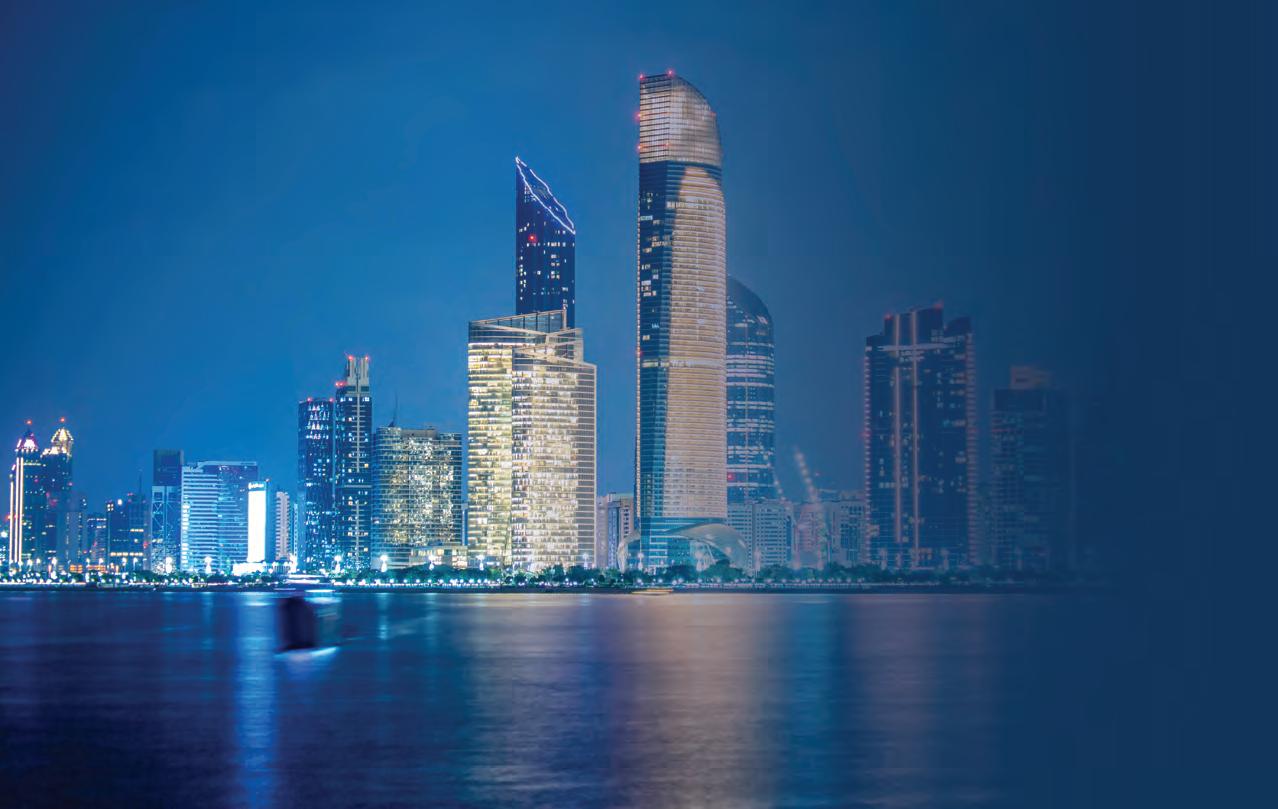
Engagement
Generate new business prospects and deepen existing relationships with direct access to established industry leaders and new personnel.
Visibility
Benefit from the extensive range of marketing and public relations carried out before, during, and post event, all incorporating your brand.
Alignment
Align your brand with the global reach of the International Association of Ports and Harbors and gain exposure to shipowners, ports, logistics providers, local communities, regulators, equipment providers, and related third parties.
Thought Leadership
Highlight your expertise and show your in-depth understanding of the industry through this global port event.
Host Sponsor
Presented by
sponsorship visit: worldportsconference.com/sponsors
For


























 CHARLIE BARTLETT
CHARLIE BARTLETT




 CHARLIE BARTLETT
CHARLIE BARTLETT









 TONY SLINN
TONY SLINN














